UNITING MATERIALS, TECHNOLOGY AND DESIGN
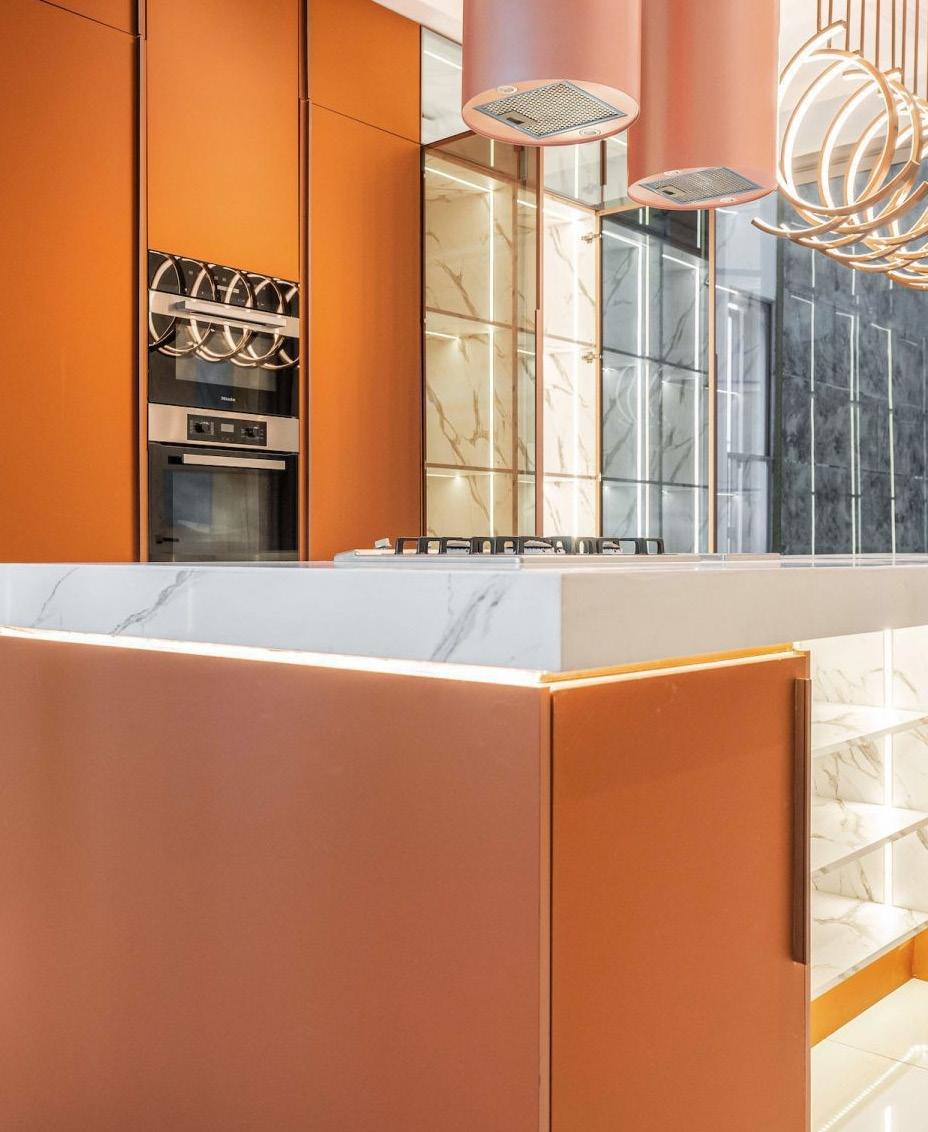
• Across the Atlantic: European Influences in the Industry
• The Evolution of Surface Solutions
• Tooling Up for the Future
• @the Show


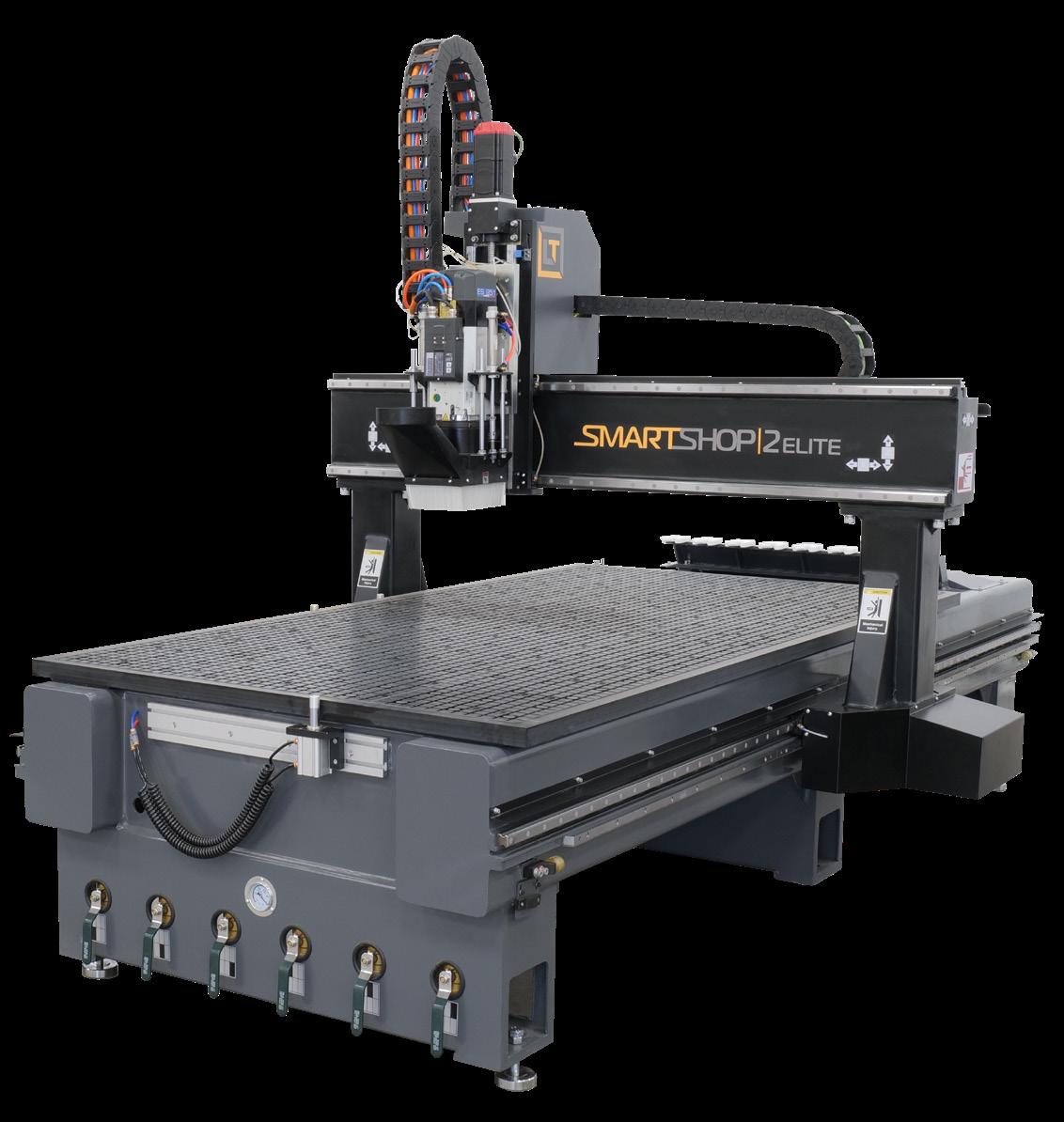
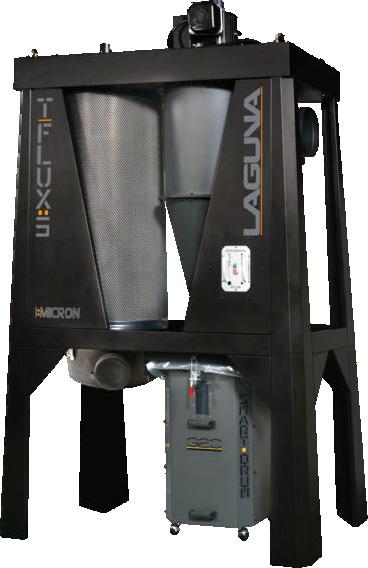
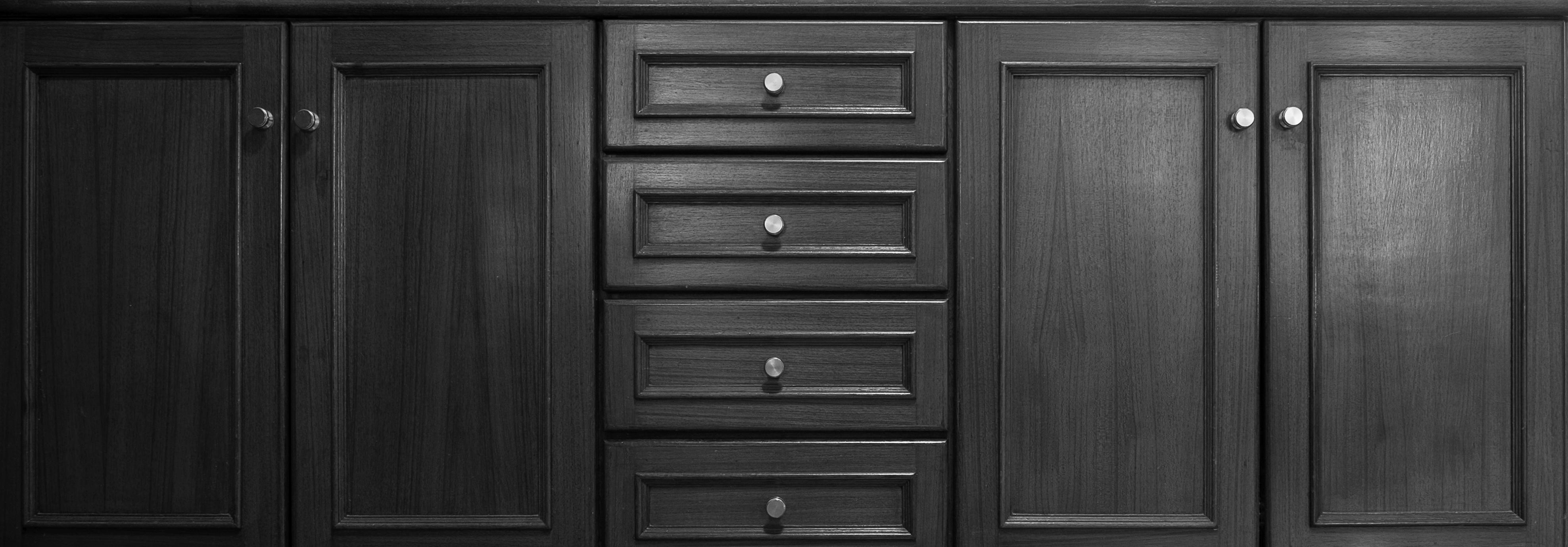

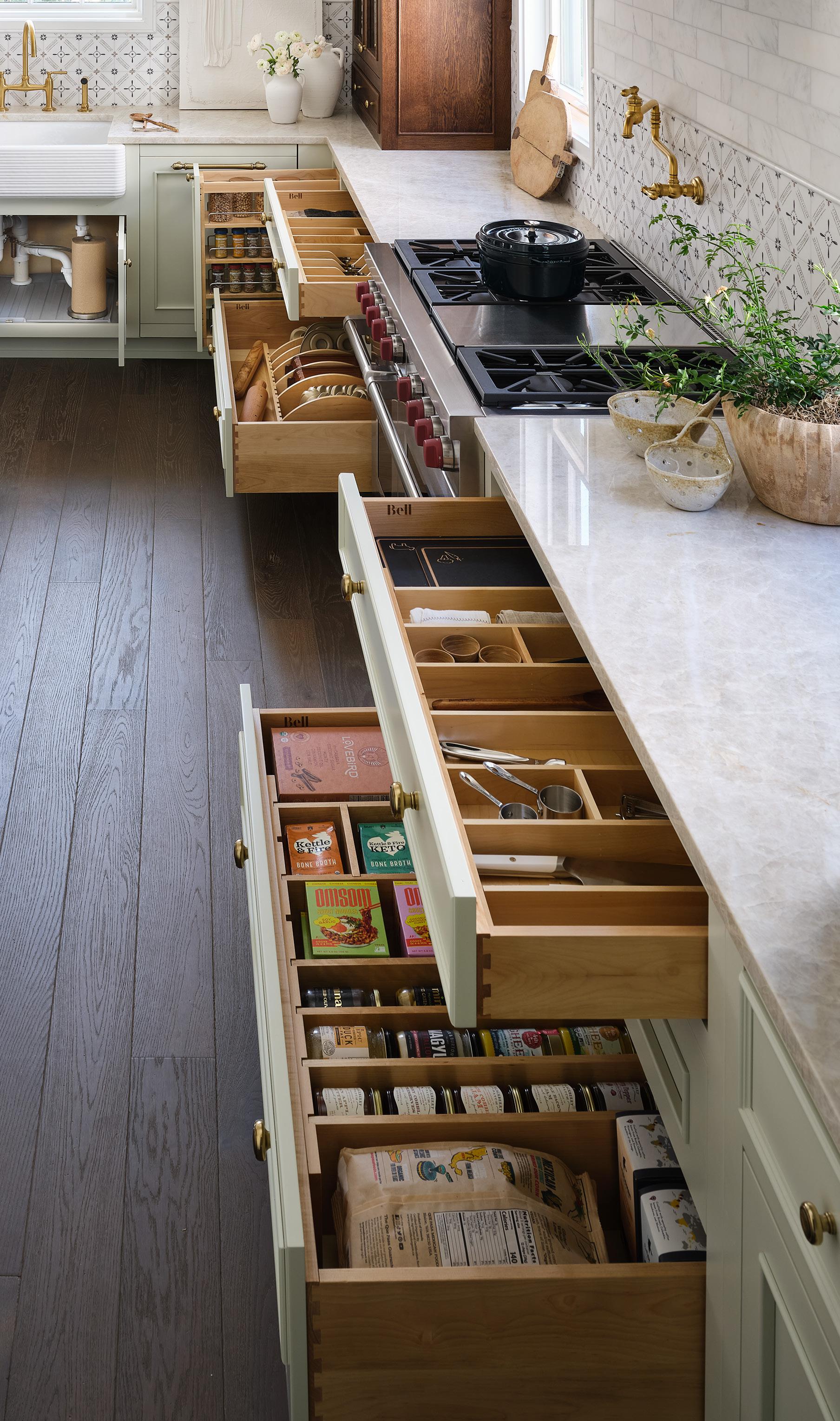
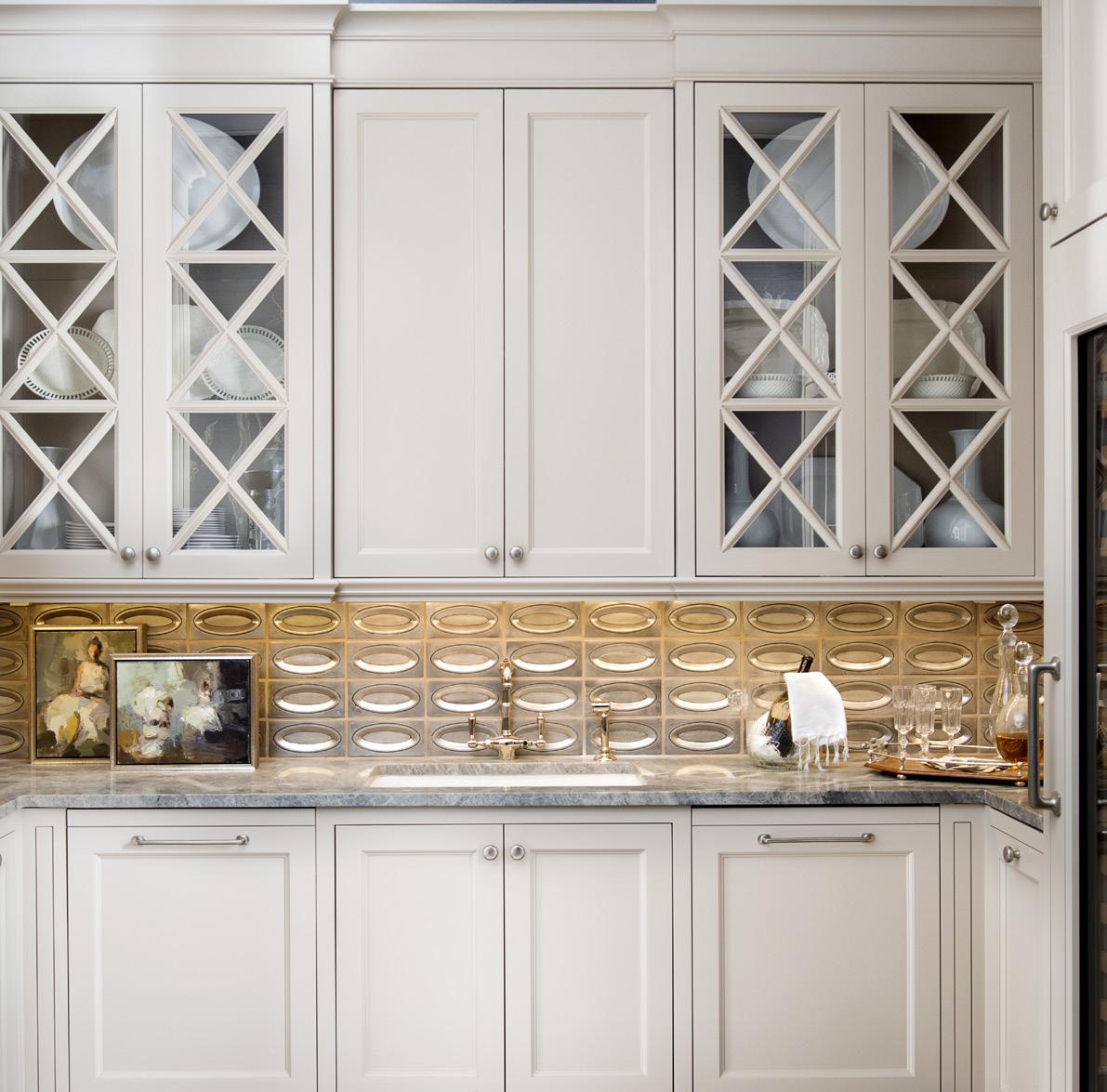

UNITING MATERIALS, TECHNOLOGY AND DESIGN

• Across the Atlantic: European Influences in the Industry
• The Evolution of Surface Solutions
• Tooling Up for the Future
• @the Show









®
At Rev-A-Shelf ®, we believe that true innovation happens where storage, lighting, and design converge. From intelligently crafted organization systems and artisan-crafted wood range hoods to brilliantly engineered LED solutions, our unified approach transforms everyday spaces into extraordinary environments.
PRESIDENT/PUBLISHER
Patrick Adams
PH: 714-486-2735 padams@526mediagroup.com
VICE PRESIDENT
Shelly Adams
MANAGING EDITOR
Jennifer Williams
PH: 714-486-2735 jwilliams@526mediagroup.com
David Koenig, DIRECTOR OF EDITORIAL Sara Graves, SENIOR EDITOR
GUEST COLUMNISTS & CONTRIBUTORS
Gerri Chmiel, Keith Christman, Eric Marshall, Susan Palé, Tovi Spero, Denise Williams
SALES
Nick Kosan
PH: 714-486-2735 nkosan@526mediagroup.com
Chuck Casey
PH: 714-486-2735 ccasey@526mediagroup.com
John Haugh
PH: 714-486-2735 jhaugh@526mediagroup.com
GRAPHIC DESIGN
Greg Lane
DIGITAL SUPPORT
Katherine Williams kwilliams@526mediagroup.com
CIRCULATION/SUPPORT
PH: 714-486-2735 info@526mediagroup.com
526 MEDIA GROUP 151 Kalmus Drive, Ste. J3 Costa Mesa, CA 92626
PH: 714-486-2735



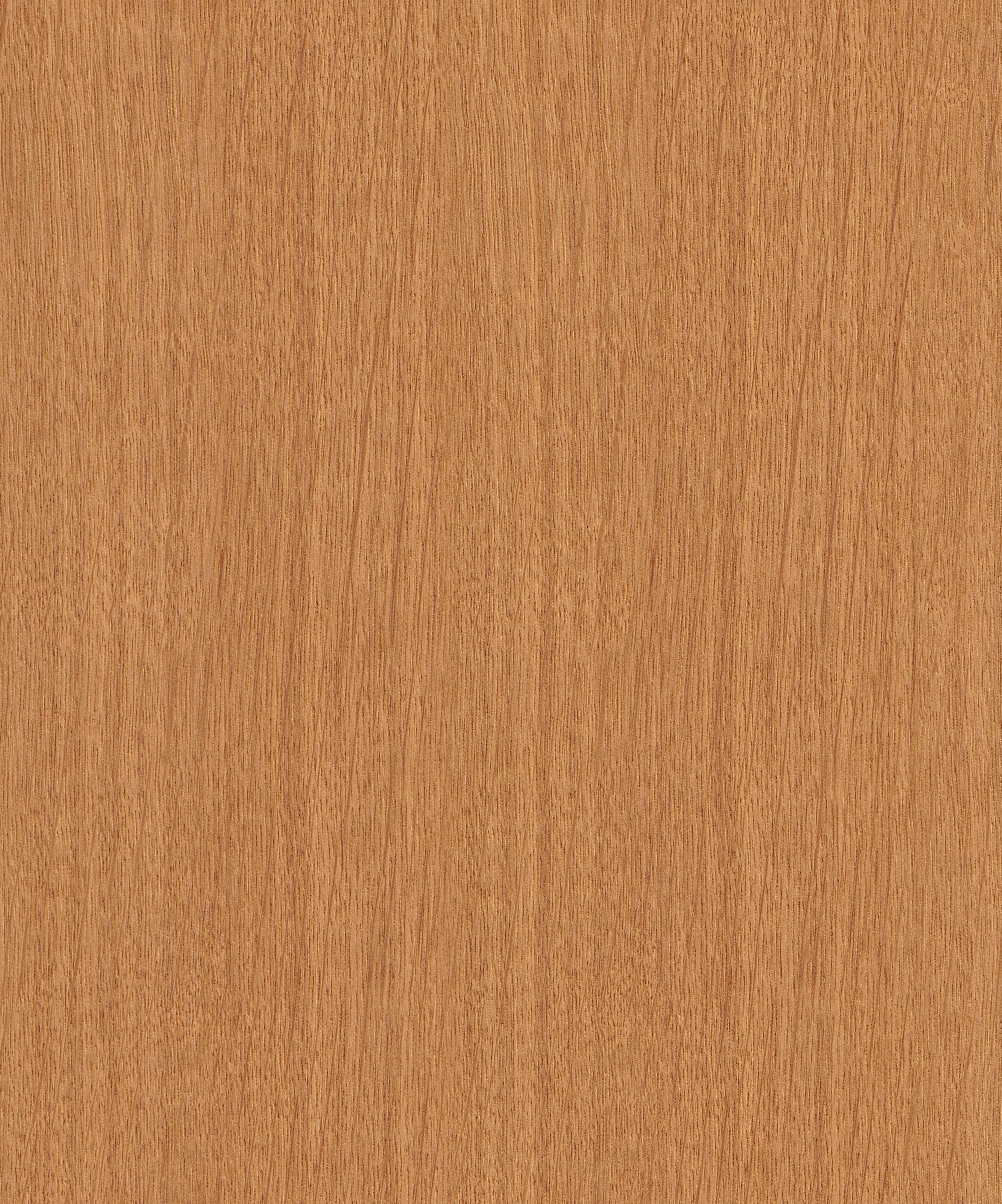

UNITING MATERIALS, TECHNOLOGY AND DESIGN
FEATURES
12 Beyond the Surface
Experts weigh in on the influence of European design aethetics
14 Across the Atlantic
How European design is shaping North American interiors
18 Euro Influence
Top 5 trends from across the pond
22 Touching the Future
How technology is transforming surfacing solutions into smart, sustainable, and sensory-rich experiences
24 Beyond the Repeat
Today’s evolution in surface design with Andrew Korzen, President and CEO for Wilsonart Engineered Surfaces
26 Gloss, Grain and Glass
A bold resurgence in residential design
28 Riding the Wave of Innovation
How technology is transforming the closet industry
31 Tooling Up for the Future
How evolving technology is reshaping tools & machinery
34 Distribution Matters
Limiting tariff trauma
38 Beautify Homes with Decorative Hardwoods
Enhancing aesthetics and functionality
42 More Than a Workshop:
Creating pathways to careers in wood manufacturing
45 Get Educated at the AWFS Fair
Tovi Spero shares a bit about the education opportunities to be found at this year’s AWFS
46 AWFS 2025 Product Roundup
A look at some products to be seen at AWFS and where to find them at the show
60 @ The Show
A recap and overview of some of the recent and upcoming shows in our industry

DEPARTMENTS
8 From the President
Hope is not a strategy
10 From the Editor
Innovation connects us all
40 Human Resources
Why pay discussions are important
72 Ad Index
74 S&P By Design
Kids Space installation at A Casa Ovunque in Milan using Organoid sensory-rich surfaces


It’s a phrase I’ve used a lot over my life that applies to countless situations. My somewhat detail-obsessive personality finds peace in the over-preparation for, well, just about everything. It started a long time ago with a simple statement I made to a mentor: “I hope we make it.” His response was, “Hope is not a strategy, what is your plan to make it?”
Then came children. As much as I’ve tried to engineer parenting, I find myself often left with hope. I used to think that with enough education, planning, preparation and deliberation that you could control the outcome. I think by the time my daughter was five, I started to give up on that plan.
What I was left with was more simple yet required more hope. Provide unconditional love. Make her feel safe and assure her basic needs were met. Be a good example of both a human being, as well as a partner to my wife. Reinforce good behavior and values. Allow her to fail but try to prevent life-changing failures. And be there… and hope a lot.
She has recently had a very rough month. Aside from being a 14-year-old teenager with me as a parent, she has had a string of challenges lately. So-called “friends” at school have turned into “mean girls” who test the very core of human decency. She is a loyal and sincere person, so this hits hard. It is time to decide what high school to attend, and trying to imagine your high school experience as an 8th grader is stressful. Some outside good friends are no longer good friends. And to top it off, in the middle of a volleyball tournament, the director of her team chose to deliver some exceptionally cruel “feedback” in the middle of a match.
Putting myself in her shoes, I think any one of these things — much less combining them all — would have brought anyone I know to their knees. The tournament situation itself would have tested the strongest people I know. She trains six days a week for a nationally ranked club travel team. She makes sacrifices and, while balancing school, home and friends, is proud of her role on the team. Personally, I would have been very tempted to share a few opinions of my own with this director and then walk off the team if I were in her shoes.
However, that’s not what she did. She still goes to school every day with a smile on her face, even though these “mean girls” led her to decide to not attend her 8th grade trip to Washington, D.C. Instead,

It started a long time ago with a simple statement I made to a mentor: “I hope we make it.” His response was, “Hope is not a strategy, what is your plan to make it?”
she is studying on her own about our nation’s capital. Instead of her social circle at school, she studies or volunteers to help the school staff. She made her high school selection along with us and is excited about her decision. Oh, and volleyball? Her response courtside to the director was simply, “Yes, Coach,” until the attack ended. She went back on the court and finished the tournament, has not missed a practice, and has not shown that it affected her one bit.
I could write a novel at this point just about my feelings about this situation and how she handled it all. The word “proud” would be used no less than a thousand times. But all I can do now is look back and try to figure out what we did right. She’s just a 14-year-old girl, doing the things she loves, and in the midst of that, got attacked by them all. Yet, she didn’t fold, complain or quit. She just kept moving forward, perhaps with the hope that tomorrow would get better.
I wrote a long time ago about how my very young daughter at the time had already taught me more about life and happiness than I had learned in a lifetime. So many years later, the lessons continue and perhaps, that in certain situations, hope is a strategy.
I hope that your year so far has been more positive than not and that, if faced with a challenge, that hope for a better day is a part of your strategy to move forward. As always, I am humbled for the privilege of serving this great industry.
Patrick S. Adams, Publisher/President padams@526mediagroup.com
Send your thoughts and messages on this issue and article to Patrick at padams@526mediagroup.com








In a world more connected than ever, design no longer evolves in isolation. The pace of innovation, collaboration, and inspiration has accelerated dramatically, fueled by technology and driven by global events that bring together the brightest minds and most daring makers in the industry.
I recently had the opportunity to attend both interzum and Ligna, two of the most significant trade fairs for our industry. Held in Cologne and Hanover, Germany, these shows offered a firsthand look at the direction our global industry is headed — and the experience was nothing short of eye-opening.
What stood out most to me was not just the groundbreaking products or polished presentations (or the amazing booths and food to be discovered), but how deeply technology is transforming design on a global scale. Whether it's AI-enhanced manufacturing systems, tactile surface materials with embedded functionality, or sustainable solutions being implemented, innovation today moves at speeds not imagined just a few years ago. Trends once rooted in a specific region now spread across continents within months or even weeks.
At interzum, I was captivated by how material manufacturers are leaning into sensory design. Ultra-matte finishes, realistic textures, and surfaces that smell like flowers or can even heal themselves are no longer novelties — they're becoming commonplace. And sustainability isn't a buzzword anymore, but instead is being woven into the very DNA of products and materials.
At Ligna, the story was equally forward-looking. Machinery is no longer just a tool; it's a system: smart, integrated, and connected. Seeing robotics, cloud-based data platforms, and AI-powered optimization on display made it clear that the future of production is agile, automated, and deeply responsive to design demands.
What I took away from these shows is this: the lines between materials, machinery, and methods are blurring.

Design, manufacturing, and distribution are no longer separate steps, but rather are part of a continuous, digitally enabled process. For our readers in North America and beyond, that means staying globally informed is no longer optional…it’s essential.
As you explore the pages of this issue, you’ll see that thread woven throughout: stories of companies adapting, inventing, and reimagining what’s possible when ideas and craftsmanship meets cutting-edge technology.

Whether you’re a fabricator, designer, supplier, or builder, we hope this issue fuels your curiosity, challenges your assumptions, and connects you more closely to the global design community of which we all are a part.
Jennifer Williams, Managing Editor



Beyond the Surface poses a question to prominent members of the industry, who then share their thoughts with us.
This quarter’s question is:
How is European design influencing the way North American interiors are being designed, specified and built today?
Crystal Morris
“European design, particularly Scandinavian influence, is playing a significant role in shaping the future of North American interiors. Designers across North America are increasingly embracing the minimalist characteristics of European design: clean lines, neutral color palettes and an emphasis on functional, clutter-free living. Inspired by Europe’s tradition of compact and efficient living, especially in

urban areas, there’s a growing trend towards designing smaller footprint homes. This shift is driving demand for smart storage solutions, integrated built-ins and multifunctional furniture that maximizes utility without sacrificing style. Additionally, Europe’s long-standing leadership in sustainability is influencing North American design decisions. There’s heightened interest in eco-friendly materials, energy-efficient systems and circular economy principles, especially in architecture and furniture, reflecting a broader cultural shift toward responsible and future-focused design.”
– Crystal Morris, Product & Decor Manager, EGGER North America
Simon Desrochers

A“Of course, there is an influence from Europe in terms of design (technology, sustainability, aesthetic and trends), and what is crossing to North America gets here more quickly now in general. But the European and North American market are very different markets. Not everything transfers, and the speed at which aesthetic and trends are adopted is still very uneven across North America. So, finding what element could migrate and when is still an important challenge for many North American manufacturers, distributors and designers.”
-Simon Desrochers, Director of Innovation and Product Development, Tafisa
Laurence Keighan

A“European design continues to shape North American interiors through its emphasis on minimalism, functionality, and refined textures — trends we observed firsthand at Interzum and Ligna. These aesthetics are driving increased demand for clean lines, natural tones, and high-performance materials that seamlessly blend beauty and utility."
- Laurence Keighan, Marketing Project Manager, Uniboard
Gerri Chmiel

“The influence of European design on North American design continues to evolve over time. North Americans are exposed to many international design styles with the internet and social media, and the effects of these influences can be quite fluid with a shortened trend cycle. I also feel that the flow of inspiration is a two-way street. It is not only the Europeans that influence us — our design aesthetic influences them as well.
We could see these influences at the Eurocucina show in Milan last year...Most European style kitchens sold in North America are featured in higher echelon showrooms, but we do see more affordable options coming to America like the collaboration between Wren Kitchens and The Home Depot, which will trickle affordable European design to the masses.”
- Gerri Chmiel, Senior Design Manager, Formica Group North America

BY JENNIFER WILLIAMS

In recent years, the influence of European design on North American interiors has evolved from a niche trend to a mainstream movement, affecting everything from cabinetry to surface materials, color palettes, and functionality. What once seemed distinctly “continental” now resonates deeply with North American homeowners, designers, and fabricators, thanks to the global exchange of ideas, the rise of social media, and a growing appetite for clean, modern aesthetics.
Driven by a shared desire for functionality and beauty, today’s interiors on both sides of the Atlantic reflect a dynamic fusion of European minimalism, American practicality, and globally inspired customization.
“The influence of European design on North American design continues to evolve over time,” says Gerri Chmiel, Senior Design Manager, Formica Group North America. “North Americans are exposed to many international design styles with the internet and social media, and the effects of these influences can be quite fluid with a shortened trend cycle.”
Among the most prominent European design elements reshaping North American interiors is the rise of clean-lined, handleless cabinetry. This hallmark of modern European kitchens, long embraced for its minimalist elegance, is quickly gaining
traction in the U.S. and Canada.
“We’re seeing strong and growing demand from North American customers for clean-lined, flat-panel cabinetry with a handleless channel system,” says designer Eva Littlefield with nobilia North America. “This sleek, modern European aesthetic offers a striking contrast to the more traditional, framed cabinetry often found in American homes.”
Beyond appearances, the European emphasis on functionality — such as integrated lighting, concealed storage, and ergonomic layouts — is also making its mark. As Littlefield points out, performance expectations are no longer regional.


Motion Redefined
MOVENTO’s synchronized runners move as one, delivering a smooth, weightless feel—even under heavy loads. It’s a difference that reflects the quality of your craftsmanship, felt in every glide.
“I’ve been fortunate to have clients on both sides of the pond, and I’ve found that performance preferences are the same,” she explains. “Features like anti-fingerprint technology, integrated task lighting, and appliance garage systems are just as valued in North America.”
As surface trends evolve, texture is emerging as a critical driver of design innovation. Whether it’s ultra-matte finishes, woodgrain decors, or stone-inspired laminates, the tactile appeal of European surfaces is transforming how North American spaces feel — literally.
“Textures are growing in popularity; clients love the way they offer a sense of depth and customization that elevates the overall design,” Littlefield notes. “High-gloss lacquers and realistic faux stone decors are trending.”
This movement isn’t lost on major suppliers. Laurence Keighan of Uniboard echoes the shift: “European design continues to shape North American interiors through its emphasis on minimalism, functionality, and refined textures,” shares Laurence Keighan of Uniboard. “[These are] trends we observed firsthand at interzum and Ligna. These aesthetics are driving increased demand for clean lines, natural tones, and high-performance materials that seamlessly blend beauty and utility.”
Historically, American homeowners prioritized resale value, favoring neutral finishes and safe design choices. But that is changing.
“European design has long prioritized personal expression and modern aesthetics,” says Littlefield. “Today, we’re seeing a cultural shift — homeowners and designers alike are embracing more personality-driven surface choices.”
The result? A growing appetite for bold finishes, deeper color palettes, and layered textures; design moves that once felt too risky for conservative North American buyers. In this new climate, Scandinavian-inspired tones like soft white oak, tactile blackened ash, and muted ceramics are making significant headway in both urban lofts and suburban remodels.
While the European aesthetic is gaining ground, there’s still work to be done in bridging the knowledge gap.
“Education is key,” Littlefield admits. “Helping my clients understand the value behind nobilia’s frameless construction, compact layouts, or sleek finishes takes time and often requires a shift in mindset from more traditional (American) preferences.”
Visual storytelling plays a critical role in this process. “Imagery, photographs, and videos not only showcase aesthetics but also

demonstrate the functionality behind the design,” she explains.
Fortunately, the internet has accelerated exposure. Social media, influencer walkthroughs, and visual platforms including Instagram, Pinterest and Lemon8 have made it easier for consumers to discover and desire European design, often before they step into a showroom.
The global design conversation is no longer one-way. While Europe continues to inspire, the flow of influence is becoming increasingly reciprocal.
“It is not only the Europeans that influence us – our design aesthetic influences them as well,” says Chmiel. “We could see these influences at the Eurocucina show in Milan last year, with kitchens featuring Shaker cabinet door styles in white – a distinctively American style”
“At the same time,” she adds, “European-style kitchen styles influence us with clean lines, furniture-like installations, waterfall islands and floor to ceiling walls of cabinetry. Most European style kitchens sold in North America are featured in higher echelon showrooms, but we do see more affordable options coming to America.”
At Salone del Mobile, Chmiel says she observed three key trends gaining traction across the Atlantic:
• Bold statement stones with dramatic veining and saturated colors
• Design nods to the 1970s and 80s, including high-gloss metals, chrome accents, and lacquered surfaces
• Elevated outdoor living, with multifunctional furnishings that blur the line between interior and exterior spaces
Despite these convergences, significant differences remain between the markets.
“Of course, there is an influence from Europe in terms of design, technology, sustainability, and trends,” says Simon Desrochers of Tafisa. “But the European and North American markets are very different. Not everything transfers, and the speed at which aesthetic trends are adopted is still very uneven across North America.”
Desrochers underscores that for manufacturers and designers, understanding when and how to adapt Euro-centric designs remains a critical business challenge. “Finding what element could migrate and when is still an important challenge,” he says.
But he also raises a larger, more complex question: How might the recent evolution of the North American economic and cultural landscape impact the European design industries in the
upcoming years?
He suggests the answer may come down to trade policies and strategic investment.
“While the full impact of these tariffs remains to be seen, they are most likely already influencing many business decisions in Europe,” says Desrochers. “Over time, this could lead to shifts in investment strategies related to innovation and design — affecting not only how European manufacturers develop new and existing business, but also how they approach product development. Will Europeans invest heavily in factories to produce in North America? Will they pivot to other markets? Which companies will seize the opportunities created by this evolving situation? Time will tell.”
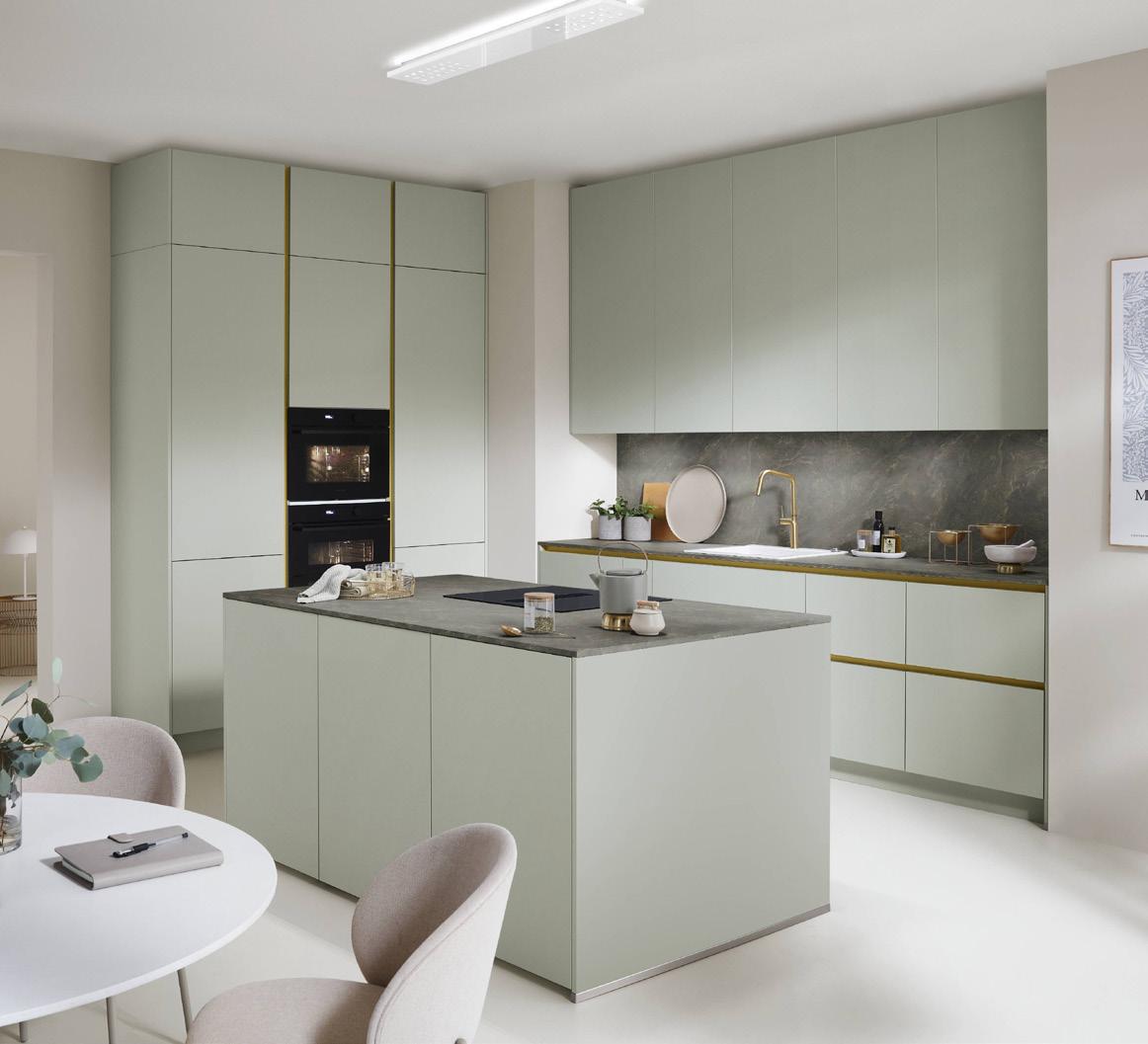
So why does European design resonate so strongly across the Atlantic?
“From the world of fashion to the sexiest cars on the planet, Americans love Europe,” says Eric Marshall, cofounder and owner of the Closet Training Institute who currently serves as a GlobalConnect advisor for the NKBA. “We know in home design it’s true, too. Bright and varied color palettes from TFL and quartz slab suppliers beg paint suppliers to follow them.”
And details matter, he says: “What’s going behind doors — pullout organizers and high-end, aesthetic drawer organizers to display kitchen utensils — is purely European. It just feels high end, and it’s catching on in the U.S.”
Ultimately, the European aesthetic, refined, minimal, and deeply functional, has become a design language that transcends borders. In an increasingly globalized world, North American homes are no longer just borrowing from Europe — they’re becoming fluent in the same design dialect. S P

European design elements are transforming how we think about function and style across the industry. Eric Marshall, cofounder and owner of the Closet Training Institute who currently serves as a GlobalConnect advisor for the NKBA, shares his top five Euro-inspired trends gaining momentum in the North American market.
1. Lighting
Closets can’t go without lighting anymore. It’s expected these days that a display unit must be lit!
2. Metal Drawers
It true that Europe and Asia have switched from a finger-jointed or dovetail drawer to a metal drawer side with integrated, soft-close, full-extension runners, that also offer push-to-open capabilities. It’s so fun to use TFL as the bottom and back in a matching color to give your drawers that matching custom-built look.
3. Handleless Fronts
It just looks cleaner and less holes drilled for possible crooked handles.
4. Super Matt and High Gloss
Although colored cabinets are taking the trend today, the solid colors have switched from textured to high-end, high gloss or super matte finishes, which look fresh and clean.
Fronts/Super Matte:
A few trends converge in this kitchen space from ALVIC, featuring their Zenit 3.0 technology, a supermatte lacquer with a silky touch. Also seen are drawer faces without handles or hardware.
5. Anthracite Accessories
It looks as though in Europe, the days of wooden and chrome accessories are fading into the background. The new color replacing it is a very dark gray, also known as anthracite. It looks rich and almost invisible when it comes to organizing the things you’re storing.

This lighting, shown here from L&S Italia Spa, won both an interzum Best of the Best and an iF Design award this year.





(L) Multiple storage solutions from Vauth-Sagel are available in the trending anthracite shade.(R) Thoughtful accessories like these from CAP's Natasha Shtapauk are very on-trend

The Grass Nova Pro Scala Drawer System allows full extension and offers metal drawers

PerfectSense Premium Laminate Gloss from EGGER features an ultra-gloss, durable laquer surface



No matter what kind of lamination you need, Daubond® PUR adhesives are made to fit the mold. We’re committed to finding the best solution for you, offering guidance and support every step of the way. When you work with Daubert®, you get a team dedicated to meeting your needs and helping you achieve success that sticks.



- 3D LAMINATING & THERMOFOIL
- FLAT LAMINATING
- PROFILE WRAPPING
- EDGE BANDING

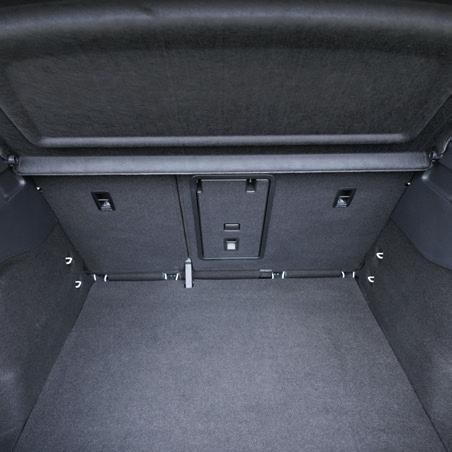
- AUTOMOTIVE
- ASSEMBLY
- CLEANING & LUBRICATING PRODUCTS
- AND MORE

BY JENNIFER WILLIAMS
Gone are the days when surfacing materials were judged purely by looks. In today’s design landscape, they are expected to do far more — fusing form with function, wellness with sustainability, and tactile beauty with technological performance.
From antimicrobial laminates to fingerprint-resistant finishes and AI-driven production lines, the surfacing industry is undergoing a high-tech evolution that’s reshaping how we interact with our spaces at home, at work — and everywhere in-between.
“Technology continues to transform the surfacing solutions industry, particularly in how we develop textured panels and tactile finishes,” says Meghan Howell, Design & Creative Director, Formica Group North America. “What's fascinating is how manufacturing innovations are enabling us to meet multiple consumer needs simultaneously.”
At the core of this evolution is innovation in surface engineering, where companies are using new methods and technologies to produce materials that are not only visually stunning but soft to the touch, ultra-matte, or even self-healing.
“Over the last few years, we’ve seen a lot of development at
the surface of decorative surfaces,” says Simon Desrochers, Director of Innovation and Product Development with Tafisa. “Antimicrobial laminates, fingerprint-resistant finishes, and thermal healing tech — all these having contributed to making a more sensual, healthier and low-maintenance living spaces.”
Today, more than ever, design is sensory, with texture playing a starring role in creating emotional resonance in a space, bringing warmth, depth, and authenticity. Whether it’s the natural grain of wood or the subtle groove of a matte stone, today’s surfaces are designed to be touched.
“Texture plate technology has been a game-changer,” explains Howell, “allowing us to create more sophisticated textures [and deliver] an authentic stone feel with a matte finish [or a] delicate open-pore ticking in a non-linear pattern that mimics the casual look — and feel — of natural wood.”
The next generation of materials now emerging — surfaces that do more than look pretty — those embedded with lighting, touch-responsive controls, heating elements, and even energy storage capabilities.
“Technology is driving rapid innovation in surfacing, leading to more sustainable, high-performance materials made from recycled content, bio-resins and repurposed sources.,” says Crystal Morris, Product & Decor Manager, EGGER North America.

“[And] there’s growing demand for natural-feeling textures that also offer practical benefits like anti-fingerprint and anti-microbial properties.”
This fusion of design and embedded technology offers exciting applications, from intuitive kitchen counters to workstations that respond to human touch.
The transformation isn’t limited to what we see and feel, but also in how these surfaces are made. At Uniboard, cutting-edge AI is helping to reshape the production process.
“Technology is transforming surfacing with smarter, more intuitive materials, like our Eclipse anti-fingerprint finish and thermal healing capabilities — that support both aesthetics and functionality,” says Laurence Keighan, Marketing Project Manager at Uniboard. “With the AI-driven Renaissance Project at our Vald’Or mill, we’re pushing innovation even further by integrating next-gen manufacturing to meet the rising demand for tactile, durable, and sensory-rich panels.”
These advancements in digital manufacturing allow for unprecedented control, enabling the creation of naturalistic, random textures while reducing waste and increasing efficiency.
“The manufacturing technology behind FENIX Innovative Materials represents one of the most significant contributions to material technology,” says Howell. “By combining multi-layer coating with nanoparticle technology and Electron Beam curing, we created a surface with remarkable properties…fingerprint resistance, ultra matte, soft touch and thermal healing capabilities that allow minor scratches to be repaired with heat.”
“Arpa has pushed textural boundaries with TUET, a deep textured laminate, which draws inspiration from Piedmontese reedbeds,” she adds. “Technology demonstrates how advancements in manufacturing can translate natural inspirations into functional surfaces.”
Experts agree that the evolution of surfacing is just beginning.
“Looking ahead, surfaces are becoming smarter,” says Morris, “with integrated lighting, touch controls and embedded sensors,
blending design with interactive functionality.”
And across the industry, surfacing is becoming smarter, greener, and more emotionally resonant.
“[The] next waves of development that could reach more mainstream applications could very well be ‘underneath the surface,’” says Desrochers. “[From] Smart panels with electric conductivity or energy storing capabilities, heating laminates and ballistic laminates, all of these [are] creating smarter, more efficient and safer spaces.”
With each new advancement, surfacing becomes not just something we see, but something we experience. In the spaces we inhabit every day, these materials are helping us live cleaner, feel more connected, and interact with design on an entirely new level.
“I believe we'll continue to see technology enabling more haptic materials that engage our sense of touch,” says Howell. “After years of sterile, white and gray interiors, consumers and designers are specifically requesting surfaces that create emotional connections through tactile experiences.”
“The challenge for manufacturers will be developing technologies that can deliver these sensory experiences while meeting demands for durability, cleanability, and sustainability,” she continues. “That's where I expect to see the most exciting innovations in the coming years.” S P
How the surfacing industry is evolving:
HYGIENE & CLEANABILITY
SELF-CLEANING, UV-PROTECTIVE
ANTIMICROBIAL, FINGERPRINTRESISTANT
MATTE TEXTURES, LAYERED EMBOSSING
EMBEDDED FUNCTIONALITY
TOUCH-FRIENDLY, LIGHTING
SELF-CLEANING, UV-PROTECTIVE
TEMPERATURESENSITIVE, HAPTIC FEEDBACK
SENSORINTEGRATED, HEATED, CONDUCTIVE
AESTHETICS & SUSTAINABILITY
RECYCLED, LOWVOC MATERIALS
MANUFACTURING INNOVATION
AI-DRIVEN TEXTURE AND FINISH DEVELOPMENT
CARBONNEUTRAL, BIOBASED TECH
FULLY AUTOMATED, MASSCUSTOMIZED
CONCLUSION: The future feels different
BY JENNIFER WILLIAMS

In the world of surfacing, one persistent limitation has long frustrated designers and architects: repeating patterns in large-format laminates.
“Traditionally in a 12-foot pattern you'd actually see the repeat every four feet,” says Andrew Korzen, President and CEO for Wilsonart Engineered Surfaces.
The result? A jarring visual break every few feet — hardly the seamless expanses clients crave. Now, a new wave of technology is setting a higher bar.
“But we have technology that we're coming up with — and this is just one example — where it now mimics a full slab which you would see in natural stone or in wood-grain designs,” says Korzen. “We're really excited about this new technology because it's always been a limitation.”
Wilsonart introduces this year what Korzen calls “a No-Repeat HPL,” an innovation that mimics full slabs of natural stone or wood without the tell-tale breaks. By erasing pattern repetition, these HPLs bring the realism of natural materials to large commercial and residential spaces.
But it’s not just about aesthetics. Fabricators and installers prize durability and cost-efficiency. “That’s a true value proposition,” Korzen asserts. “This beautiful, seamless look, along with the installed cost advantage versus traditional tile and speed of installation.” With shorter setup times and less labor than
traditional stone or tile, these laminates offer practicality — and costsavings — alongside luxury appeal.
“We're using more and more technology for both performance and appearance,” he says. “We continue to innovate and feel we're one of the industry leaders on some of these new innovative large moves.”
Korzen also emphasizes performance credentials, saying you can “drop a bowling ball on it and it’s not going to break or shatter. You can beat the heck out of this.” He spoke of a demo in which one of these surfaces proved to have high resilience and scratch resistance after impacts that would damage natural stone or other composites. The durability of these new laminates makes them wellsuited for busy kitchens, commercial spaces, and active households, he adds.
Until now, fabricators relied on specialized tools to shape surfaces, but Korzen highlights a crucial advantage: “You can cut these materials with saws and woodworking tools,” he says. “You may need a few to have special bits and blades, but we provide that to the customers. There’s a little learning curve, but once you do it once, you got [it].”
And because these laminates work with familiar equipment plus manufacturer-provided tooling, even smaller shops can fabricate high-end surfaces without significant capital investment, he says.
Wilsonart is also working to close the gap in many designs
featuring laminated surfaces, says Korzen, by introducing coordinated lines across the spectrum of laminates offered.
“What we are able to offer is not just HPL, but also the coordinated TFL or low-pressure laminate that coordinates exactly with our high-pressure laminates,” he explains. “We are the only producer in North America that's capable of doing this — not just the design, but the finish. What this means is that you can have your high-pressure laminate on your horizontal surface and then coordinating surfaces to use elsewhere in your design or project.”
“It looks so much more finished,” he says, meaning designers and homeowners can now achieve cohesive looks, from cabinet exteriors to drawer interiors, without extra costs.
Aesthetics continue to evolve, ranging from high-gloss to matte finishes. “We’re working on some new technologies for a higher gloss finish,” says Korzen, “but we’re getting a lot of requests for higher design, quartzite design. We have a whole collection, Ultra Matte Ultra Luxury, but it’s still low [pressure laminate]. It is fingerprint-resistant to greases and anything on your hand, but looks and feels like a luxury, more-expensive material.”
These innovations aren’t just for offices or hospitality; they’re penetrating the residential market, as well. “So we've introduced this coordinated linens interior offering so that is a little bit of an upgrade,” he explains. “But if you're spending money on a kitchen remodel, it won’t break the bank — and it looks so much more finished. Whether it's in your drawers or cabinets or — you know what? We're also seeing it in a lot of master bedroom closets remodels.”
As these non-repeat laminates scale across residential and commercial segments, offering coordinated interior finishes and ultra-matte textures, they may well redefine expectations across the industry.
And Korzen recognizes that this is a turning point in surfacing innovation: high-pressure laminates are no longer limited in pattern size, visual realism, or fabrication ease. These materials are merging design beauty with rugged endurance and installation efficiency, making stylish, seamless surfaces accessible to more people. “This isn’t just a minor tweak,” he says. “It’s a paradigm shift in how we think about surfaces — from how they look, to how they’re made, installed, used, and experienced. It’s a super-exciting time.” S P

BY GERRI CHMIEL

The surfacing industry has undergone an evolution in residential design, with a notable resurgence of bold textures, glossy finishes and natural materials. As we cycle through various design eras, one trend stands out — an unmistakable return to the 1980s aesthetic, infused with modern sensibilities. This trend, which can be seen across a variety of materials from wood to glass, is quickly becoming a hallmark of contemporary residential interiors.
In recent years, there has been a noticeable shift toward glossy and shiny finishes reminiscent of the slick surfaces that defined the 1980s. While the ‘80s embraced high gloss, often with a sleek, polished appearance, today’s designs are bringing a more refined version of this trend. The juxtaposition of highgloss surfaces, whether on stone, wood or furniture, adds a sense of luxury and dynamism to living spaces.
A significant component of this revival is the use of statement stones. Rich, dramatic surfaces, like those seen in marble, are once again commanding attention. Burgundy and deep red
stones, along with intricate veining, create striking focal points in the home. The '80s saw the rise of bold color palettes and current homes are following suit with the addition of statement stones in hues of deep green, red and violet. The glossy finishes on these stones paired with modern, high-lacquer wood finishes offer an elegant blend of craftsmanship and contemporary flair.
While the 1980s focused heavily on sharp lines and glossy finishes, today’s trends are more about softness. Organic asymmetry has made a comeback, with furniture and decor pieces embracing more curvaceous, flowing lines that create a sense of harmony in the home. Gone are the days of harsh, angular edges, instead, rounded and soft forms dominate both furniture and architectural elements.
This desire for organic and soothing design is further reflected in the resurgence of natural materials. Bamboo, once a staple of the wellness trend, is now being used in both furniture and accessories to evoke a sense of nature inside the home. Woods, both light and dark, are used in low contrast, often
in harmony with organic stone surfaces, creating an overall calming aesthetic.
Glass also plays a significant role in these evolving design trends. However, it’s no longer just about simple, transparent glass. Glass surfaces are becoming more textured and artisanally crafted and feature intricate patterns that add an element of tactile interest to the space. Wavy, grooved and bubbly glass surfaces are being embraced for their unique aesthetic qualities. This trend is especially prominent in furniture in which glass is often encased in tubular metal frames, creating a playful juxtaposition of transparency and solidity.
Additionally, back-printed glass is being used to preserve intricate designs while offering durability. These glass surfaces not only protect delicate patterns but also provide a striking visual element to spaces. The trend toward more innovative glass surfaces represents the fusion of craftmanship and modern technology, as designers experiment with new techniques to push the boundaries of what glass can achieve in design.
The 1980s were known for their maximalist approach to design: bold colors, luxurious materials and statement-making furniture were the defining characteristics. Today’s iteration of ‘80s-inspired design retains some of these maximalist elements but introduces a more minimalist approach when it comes to overall spatial planning. Furniture is low-profile and cloud-like, featuring plush, comfortable textures that are neither furry nor velvet, but somewhere in between.

As we continue to see a revival of 80s design, particularly in the surfacing industry, it’s clear that these trends have staying power. The movement toward organic shapes and the reintegration of bold, statement-making surfaces all point to a growing desire for balance in our living environments. Designers are embracing these trends for their ability to create spaces that feel both timeless and modern.
The surfacing industry is responding in kind, with products that blend natural stone, glass and wood in innovative ways. As materials evolve, so does our approach to living spaces — spaces that are luxurious, serene and deeply connected to our sense of well-being. The return to ‘80s maximalism coupled with a focus on organic design is setting the stage for a new era in residential design. S P


Gerri Chmiel joined Formica Corporation in 2001 and is the Senior Design Manager. Chmiel is responsible for creating and managing the trend and design portfolio of surfacing materials for the North American residential market including Formica brand laminate, 180fx laminate, Everform Solid Surfacing and Homapal Metals brand. She leads the effort for design research and residentially focused design development, and acts as one of Formica Corporation’s voices of design through targeted customer presentations and speaking engagements. 800-457-746 8 • peak
Explore our beautifully redesigned website, featuring a new e-commerce platform. We keep you operating at PEAK performance.
• Advanced manufacturing and inventory capabilities boost operational efficiency.
• Industry-leading quality from tool manufacturing to sharpening.



BY JENNIFER WILLIAMS

From custom walk-ins to sleek reach-ins, the modern closet is no longer just about storage — it’s about smart design, seamless experiences, and cutting-edge tools behind the scenes.
As digital solutions become central to how closet professionals design, sell, and deliver, technology is transforming every step of the process.
At the forefront of this evolution is ClosetPro Software, whose cloud-based platform and forward-thinking approach are helping shape the future of the industry with their software being used by many closet design and installation companies across the country.
“One of the primary benefits of our software is the 3D and the high-res renders that you can generate right through the system,” says Joe Bergamo, Director of Sales and Marketing
for ClosetPro Software. “And that really opens up what you can do and makes things a lot easier for everyone involved.”
That reliability is vital, he adds, since the closet industry — particularly on the design side — depends on speed and accessibility. Software that used to require bulky downloads or dedicated systems now lives entirely online. “You just need access to the Internet,” says Bergamo. “And if you are out at a new build with no Internet, you could hotspot off your phone, start a design, and then go home and finish it later.”
And because renderings and processing happen on powerful remote servers, users no longer need high-end machines to run complex visuals. “All that information takes the onus off of user PC requirements,” explains Bergamo. “You just submit a render and it gets shot off to our server. When it’s complete, you get an email, and it’s automatically attached to the job.”
This improved experience is thanks not only to ClosetPro’s custom software but also to the ever-evolving performance of cloud infrastructure giants like Google and Amazon, he adds. “We’re kind of just sitting on top of the wave,” says Bergamo. “As [technology] moves forward, we can access all these things and continue to improve how our business functions.”
Few tools are more persuasive in the sales process than a clear, immersive visualization. In today’s closet industry, highresolution 3D renderings are becoming the expectation — not the exception.
And it’s not just about pictures — it’s about experience. Thanks to native smartphone and tablet capabilities, ClosetPro’s platform supports 360-degree VR renderings. “When you’re on
a smartphone or tablet, that basically becomes your viewing window, and you rotate the device to look around the room,” explains Bergamo. “We don’t have to do anything special to make that happen — it’s built into the tech people already have.”
This accessibility and quality serves a dual purpose: streamlining workflow for the designers and fabricators who use ClosetPro’s software, while also enhancing the client-facing experience. “It’s all a way to improve upon the sales process,” he says. “The end customer expects to see what they’re going to get. Things have become more visual. In every facet of life, that’s the norm now.”
In contrast to older, key-based design software that required physical dongles and specific system setups, ClosetPro’s tool reduces friction. “A lot of the other tools that we would compete with are key-based,” says Bergamo. “We get questions like Do I have to download a key? or Do I need specific system requirements? ”
His answer is usually a pleasant surprise for users familiar with more cumbersome systems: “No, you just need Internet access.”
This open accessibility also supports collaboration and flexibility. A user can start a design in the field, pause, then resume from the office or at home. “Everything is saved in real-time on our servers,” says Bergamo. “You’re not tied to a single machine.”
While cloud computing and rendering technology have matured, the industry is just beginning to tap into the next


frontier: artificial intelligence. And while AI isn’t fully integrated into ClosetPro’s design platform yet, Bergamo says they have their eye on it.
“AI is the big unknown right now,” he admits. “But it’s not just for fun anymore — there’s real utility.”
In fact, the team already uses tools like ChatGPT for some business and marketing tasks. “It gets you quite a bit of the way there, but you still have to add your own experience and business context,” says Bergamo.
Others in the industry are beginning to use AI creatively for mood boards and concept generation — tools that help clients visualize their dream closets even before a design is finalized. And while ClosetPro has not yet built AI into the software side of the company, Bergamo says he sees its integration as inevitable. “Everyone is curious, and we’re no different,” he says. “It’s going to be the next step.”
Bergamo’s approach to AI echoes a broader philosophy about technology: Don’t rush — adapt wisely. “AI has been a slow burn,” he says. “At first, it was a novelty, but now it’s actually useful. And people are starting to say, I don’t want to be stuck behind the 8 ball.”
That cautious optimism sets the tone for where he sees the industry heading. Rather than adopting new tools just to check a box, Bergamo emphasizes the importance of thoughtful implementation. “It’s about figuring out the best way to use it as a tool — not just saying, Hey, we use AI,” he explains. “You have to figure out how to actually make it helpful, how to make it work FOR you.”
For the ClosetPro team, technological advancement isn’t an isolated benefit — it’s a ripple effect. Improvements in global infrastructure, whether in Wi-Fi speed, server power, or mobile capability, automatically enhance their product.
“We’ve kind of attached ourselves to these bigger advances,” says Bergamo. “And then our customers benefit. And then the homeowner benefits. Everybody gets a better experience.”
That approach allows ClosetPro to scale smartly while staying lean. As servers get faster and design tools more intuitive, their software naturally becomes more powerful without needing massive overhauls. “The customer experience gets better, 3D gets better, rendering gets better,” he adds. “That just comes with the advances we’re fortunate enough to have access to — without having to build them ourselves.”
In a world where homeowners increasingly expect instant visual confirmation and businesses seek greater efficiency, the role of technology in the closet and organization industry is no longer a bonus — it’s essential. For innovators like ClosetPro Software, the secret to success isn’t simply using the latest tech — it’s understanding how to harness it to create a better experience from design to delivery.
“We’re riding that wave,” says Bergamo. “And it’s carrying the whole industry forward.” S P

BY JENNIFER WILLIAMS

From refined panel surfaces to AI-driven production lines, our industry is undergoing a technological revolution — especially in the tools and machinery that bring custom millwork, cabinetry, and furniture to life.
As consumer tastes shift toward high-end, highly customized finishes, manufacturers and fabricators are investing in smarter, more precise, and increasingly automated systems to keep pace. At the heart of this transformation are new generations of cutting tools, CNC routers, and intelligent systems that are helping shops of all sizes streamline their workflows and elevate craftsmanship.
The days of basic melamine are long gone. Today’s panels come with complex surface treatments, ranging from ultramatte and high-gloss to deeply textured, fingerprint-resistant laminates. These materials are not only more visually striking but also more demanding to machine.
“Panel finishes have evolved significantly, with more customers demanding high-gloss, textured, or ultra-matte surfaces,” said Duane Marrett, Vice President of Marketing at Thermwood
Corporation. “These finishes are less forgiving and require more precise machining to avoid chipping, tear-out, or surface imperfections.”
This trend has driven a surge in demand for advanced cutting tools — especially compression spiral bits and diamond tooling that reduce edge fraying and surface damage. Coupled with next-generation CNC routers, these tools provide the delicate balance between aggression and control.
“Thermwood’s high-performance CNC routers, including the CabinetShop 43 and Cut Ready Cut Center, are engineered to meet these needs by providing the accuracy and tool control necessary to handle delicate, high-end finishes,” added Marrett. “These systems reduce the need for excessive sanding and rework, streamlining the overall production process.”
Perhaps the most impactful changes are being seen in the custom residential millwork sector. Custom cabinetry, trim, and built-ins often involve one-off parts, traditionally requiring manual measuring, programming, and cutting. Today’s tech changes that equation entirely.

“Custom residential millwork often involves highly detailed, made-to-order components, traditionally requiring extensive labor, manual programming, and long lead times,” Marrett explains. “Thermwood’s CabinetShop 43 Work Cell integrates intelligent nested-based CNC routing, automatic part labeling, and material handling to create an efficient, production-ready workflow ideal for custom cabinetry and millwork.”
That efficiency has massive implications, not only in reducing lead times, but also in simplifying labor. Shops that once relied on experienced programmers can now deploy intuitive systems that require minimal training.
“For shops looking to eliminate programming altogether,” Marrett continues, “Our AI-powered Cut Ready Cut Center allows users to produce custom cabinets through a simple touchscreen interface — no CNC experience required. Paired with modern 3D
rendering tools, these technologies enable a seamless transition from digital design to [the] finished product.”
The effects can be widespread: designers can visualize in 3D, clients can approve with confidence, and fabricators can go directly from concept to creation, faster and with fewer errors.
While CNC routing has long dominated panel processing, robotic automation is opening new doors, particularly when paired with 3D scanning.
“The affordability of 3D scanning has allowed for the introduction of new types of routing, i.e. routing with a robotic-mounted spindle,” says Joey Koenig, President of 7Robotics. “By being able to have accurate 3D models, automated programs can be more easily written to produce the part.”
This pairing allows for advanced contouring, shaping, and nonlinear routing that traditional flat-bed CNC machines struggle with. It’s a solution especially useful for architectural millwork, curved panels, stair components, and other non-standard geometries.
As machines grow more intelligent, so too does the information they can provide. Manufacturers are now moving into a new era where machine learning and real-time data acquisition play an increasingly vital role in operational efficiency.
25_004297_Surface_and_Panel_Q3 Mod: May 13, 2025 4:29 PM Print: 05/20/25 2:24:25 PM page 1 v7

Protect your precious cargo! From peanuts to padding, Uline has hundreds of cushioning items to fill your void. Order by 6 PM for same day shipping. Best service and selection – experience the difference. Call 1-800-295-5510 or visit uline.com
“We foresee that manufacturers will be able to get accurate and timely data around product defects, throughput bottlenecks and preventative maintenance,” says Koenig. “Robotic systems with sensors, cameras, 3D scanners and other sensing devices will help capture this data. Artificial intelligence can then interpret and make decisions as datasets expand.”
These insights allow manufacturers to anticipate problems before they become costly delays, optimize scheduling, and refine production parameters in real time. This creates a more agile, responsive factory floor — one capable of adapting to market demands with far greater precision.
So what does the future hold for tools and machinery in our industry?
“In the woodworking, cabinetmaking, and millwork industries, we’re seeing a clear trend toward smarter, more automated production,” says Marrett, who adds that systems like the Cut Ready Cut Center are only the beginning of what’s possible when machine intelligence and user-friendly interfaces converge.
“The machine’s built-in intelligence handles design, optimization, and machining, allowing even small operations to achieve high-end results with dramatically less labor,” he explains.
On the more industrial end of the spectrum, Thermwood’s CabinetShop 43 Work Cell continues to evolve as a fully integrated

solution, combining material handling, part tracking, and optimization within one seamless flow.
“Looking ahead, we anticipate even greater integration between design software, production data, and machine control,” says Marrett, “creating a more connected, responsive manufacturing environment that boosts productivity and flexibility.”
And it’s not just about speed or scale — it’s about empowering shops of all sizes to offer fully customized, made-to-order products with minimal waste and maximum quality.
Whether it’s ultra-matte panels that require delicate tooling or oneoff architectural features made possible through robotic routing, the surface & panel industry is embracing innovation at every level. Tools and machinery are no longer just equipment — they are intelligent collaborators in a fast-moving production chain. S P

Outstanding anti‑fingerprinting (Perfect Matt)
Remarkable colour depth
maintenance
Smooth, velvety touch
Highly scratch resistant
Heat resistant
UV light resistant
Manufactured in North America
BY DENISE WILLIAMS

We knew they were coming…and now they’re here. Boy, oh boy, are they ever here. The U.S. supply chain, including wholesale distributors, must now figure out how to navigate a challenging tariff landscape that is at once confusing, highly fluid, and starkly different from what the country has grown accustomed to over the last quarter of a century.
Crowe LLP Principal Dan Swartz, who specializes in global customs and duties, says that, to their credit, many companies recognized the writing on the wall and tried to prepare for the onslaught by beefing up capacity. “Among the companies that were reading the tea leaves during the summer of last year, when it became increasingly more likely that [Donald] Trump was going to win the election, there was a big push to bring inventory forward into the United States,” he observes.
Given the President’s longstanding and vocal pro-tariff
stance, Swartz gently scolds, this year’s swift policy action shouldn’t have caught anyone off guard. The same can’t be said, he concedes, for what has unfolded since.
While Trump’s campaign rhetoric laid the foundation for a potential 50-60 percent additional tariff on China, Swartz agrees no one could have predicted what he frames as a “gamechanging” escalation. Before a temporary suspension took effect on May 12, the levy had reached upwards of 145 percent — more than double what had previously been viewed as the worst-case scenario. The spike delivered a stinging blow against the backdrop of a “staggeringly low” effective duty rate for goods coming into the United States since the late 1990s/early 2000s. The culture shock from watching the needle accelerate from about 4 percent during that time to approach 15 percent only deepened the cut. Although the 90-day freeze extends some relief, what happens once that time runs out is anyone’s guess.
In the meantime, Swartz suspects, the temporary protection afforded by boosting capacity is slipping away from distributors that tried to get out in front of the chaos. “The challenge now
is that as inventory is being sold off in the market, it must be replenished — but at a much higher tariff rate,” he explains. “I think a lot of companies weren’t really prepared for that second step of dual-sourcing or near-shoring, and now they’re scrambling.”
From a supply chain perspective, pivoting to dual-sourcing and near-shoring is one of the first, natural, and most obvious responses to the new tariff climate. But Swartz assures there are additional levers that can be pulled for relief, depending on a company’s profile and circumstances. He explains a few here:
Lowering your effective duty rate. There may not be any way around paying a particular tariff that’s been imposed, but Swartz and other experts know there are ways to at least bring the cost down. For example:
• Duty Drawbacks. Companies that both bring in and send out goods may be eligible for refunds from the United States each time they export.
• First Sale for Export. Under the right circumstances, this provision can benefit a company with multi-tier transactions, Swartz says. Specifically, he elaborates, “you utilize the transaction between the manufacturer and the intermediary as the declared value for customs purposes, as opposed to using the transaction between the intermediary and the U.S. import buyer,” which has a higher value. Although companies will have to jump through some hoops to make this strategy work for them, Swartz says many are giving the option a hard look.
Exploring Foreign Trade Zone (FTZ) status. Numerous distributors have retained Crowe LLP to conduct cost vs. benefit analyses to support a decision to convert their business into a FTZ…or not. Once labeled as such, a space designated as an FTZ — whether a warehouse, factory, or other area — is treated as though it’s outside of the customs territory. Therefore, the company can bring in both domestic and foreign goods, with no duty liability to speak of until that merchandise exits the zone.
“We’re definitely finding monetary benefit for clients” as Crowe LLP performs these audits of import data, Swartz reports, although he acknowledges that the uncertainty of the situation in the future complicates the decision to move in this direction. Getting an FTZ up and running requires a lead-in time of 6-9 months and a financial investment of anywhere from $95,000-$185,000, he estimates; so while it may be on the table for some, it won’t be an ideal solution for every distributor.
Examining tariff classification. This next option is, however, applicable across the board. Building materials distributors are
particularly vulnerable to Section 232 tariffs, notes Swartz. He urges any firm that deals in steel, aluminum, or derivatives of steel or aluminum (but that hasn’t yet reviewed this information) to run — not walk — to ensure their classifications are accurate. If they aren’t, he warns that the correction could be costly for them by subjecting their products to tariffs.
These various tactics are hardly groundbreaking, Swartz points out — they’ve been available all along but the comfortable trade environment in recent decades effectively muted the need for them.
Nor is this list of recommendations exhaustive. In a National Association of Wholesale-Distributors (NAW) webinar on tariff policy that took place in April, some of the same strategies to reduce import value, embrace FTZs, and diversify supplier sources were mentioned; and additional potential solutions were highlighted as well.
The No. 1 move for distributors in the current tariff climate, according to NAW guest expert Edward “Eddy” Hayes, who leads the international trade and customs practice at Leake & Andersson, entails poring over contractual agreements with a magnifying glass. Whether they are basic terms and conditions or detailed supply and distribution agreements, he impressed that companies must proactively check contract language

and insist on clauses that protect their business. Specifics they should be looking at, he suggested, include:
• Material price escalation. Long favored by construction companies, Hayes noted that this clause is drawing a great deal of attention from the distributor community. It allows for a tariff adjustment in the event that the price of a key material moves above or below set thresholds.
• Country of origin Delving into customs classifications is key, Hayes underscored, and not just for importers. For example, he said, “If shipping components between multiple countries…it might be that you could get origination in a country that has a lower base tariff rate.” But companies must perform the due diligence to discover this information.
• Force majeure. Typically used during wartime or in the aftermath of natural disasters, Hayes suggested it might be worthwhile to test the boundaries of this clause, which provides an escape route from contractual obligations following an extraordinary event. Force majeure was in heavy rotation during the COVID-19 pandemic but, Hayes proposed, now might be a good time to investigate government action as a qualifying trigger for this clause.
Material price escalation and tariff adjustments have been largely underutilized among distributors but, according to Hayes, they’re part of the conversation now.
While consultants like Crowe LLP and industry groups like NAW are eager to educate the distributor community on what steps to take to minimize tariff-related pain, they also advise companies on what they definitely should not do.
In the NAW briefing, Hayes cautioned against continuing to rely on China for supply chain needs. Take a hard look at alternative sources, he recommended. Keep in mind, he reasoned, that although other countries may also be subject to reciprocal tariffs, they won’t be as high as they are for China.
Meanwhile, Swartz warns that, as they explore the different avenues to blunt the impact of tariffs, distributors and other companies must take care not to step over the line. Noncompliance, whether intentional or not, comes with steep penalties; and, from what he’s seen thus far, there’s likely to be focused attention on enforcement in the days ahead — particularly with respect to the USMCA (United States-Mexico-Canada Agreement). Customs and Border Protection is keenly aware of this trade pact increasingly doubling as an opportunity for fraud, Swartz says, and will be paying close attention to whether or not
goods qualify. And, he explains, eligibility typically hinges primarily on — you guessed it — tariff classification. More about trade compliance, as well as additional insights on valuation stripping, transfer pricing, and more, can be found in an article Swartz recently penned for Industry Today.
There’s no doubt that the tariffs unleashed by the Trump administration are causing growing pains for U.S. commerce. But, Swartz emphasizes, the experience should make American companies stronger going forward. The takeaway, particularly for distributors, he suggests, is that “we have lost our sense of how to navigate around a lot of these trade issues because we’ve been in a virtual free-trade environment for so long. Now companies are having to pay attention to things like classifying goods under the tariff, investigating what sort of valuation opportunities there are to try to reduce import value, contemplating becoming FTZs, and utilizing duty drawback for recovery.”
Experts agree, today’s turmoil is a reminder for distributors to keep U.S. tariff structure on their radar regardless of the policy climate at any given time. “Good practice says to pay attention to these things year-round.”
The current struggles, he continues, should raise a red flag for companies that now is the time “to reinvest in duty management, by having either consultants or staff who are knowledgeable on tariffs and duty issues and by looking holistically at the supply chain and seeking opportunities to recover duty, mitigate duty, or even defer duty.”
Indeed, experts agree, today’s turmoil is a reminder for distributors to keep U.S. tariff structure on their radar regardless of the policy climate at any given time. “Good practice says to pay attention to these things year-round,” Hayes said during last month’s NAW webinar.
Adapting to the new reality is critical for those who want to remain competitive, according to Swartz. He’s confident that tariff rates will eventually come down but insists the “laissezfaire” days of trade with America are in the past. “We’ve gone from being your local bar where anybody can walk in to now we’re a club and we’re charging a cover to get in,” he offers as a colorful analogy. “We’re not going back to being a local bar again.” S P
Denise Williams is the Editorial Senior Manager at the North American Building Material Distribution Association. Visit www.nbmda.org for more information.



Designed and assembled in Austria, Dynapro undermount slides set the standard for superior running performance, silent operation, and effortless motion. Its internal, synchronized rack and pinion system and multiple front-locking device options make it the smoothest and most versatile slide on the market.
Give your cabinetry the best with Dynapro. www.grassusa.com
BY KEITH CHRISTMAN

Homeowners and interior designers have long valued the aesthetic appeal and versatility of hardwood products. Among the preferred choices are hardwood plywood, hardwood veneer, and engineered wood flooring. Each of these materials offers distinct advantages, making them suitable for various applications within home interiors. Let’s examine the characteristics, benefits, and optimal uses of these three hardwood products.
Hardwood plywood is a type of plywood in which the surface and back veneers are made from hardwood species such as oak, maple, cherry, and walnut. The inner layers may
consist of softer wood species or engineered wood. Hardwood plywood is noted for its strength, stability, and natural beauty. Hardwood plywood made in the United States is generally manufactured to meet the American National Standard for Hardwood and Decorative Plywood (ANSI/HPVA HP-1-2024).
ANSI/HPVA HP-1-2024 is the North American consensus standard for hardwood plywood and decorative plywood. It details the specific requirements for all face, back, and inner ply grades as well as formaldehyde emissions, moisture content, tolerances, sanding, and grade marking. HP-1-2024 establishes marketing classifications and includes veneer grading tables. Hardwood plywood in the U.S. is also made from abundant wood sources. The volume of U.S. hardwood growing stock increased by more than 130 percent from 5.2 billion in 1953 to 12 billion cubic meters in 2012.
Characteristics and Advantages
• Durability: Hardwood plywood exhibits high durability due to the quality of the woods used and the meticulous manufacturing process. The cross-grain construction of the core layers enhances its strength and minimizes the risk of warping.
• Aesthetics: The surface veneers of hardwood plywood display the natural beauty of hardwood, providing a rich and sophisticated appearance.
• Versatility: Hardwood plywood can be utilized in a broad range of applications, including cabinetry, furniture, wall paneling, and architectural millwork.
• Environmental Benefits: The use of hardwood plywood can be more environmentally sustainable than alternative materials. Wood products through photosynthesis of growing trees absorb carbon dioxide from the atmosphere and store it in the wood structure for decades while in use.
Optimal Uses in Homes
• Cabinetry: Hardwood plywood is an excellent choice for kitchen and bathroom cabinets due to its strength and beautiful finish that can be stained with lighter or darker finishes or even painted if desired.
• Furniture: Many high-quality furniture pieces are crafted from hardwood plywood, offering both durability and an appealing appearance.
• Wall Paneling: Hardwood plywood can add warmth and sophistication to living spaces when employed as wall paneling.
Hardwood veneer is composed of thin slices of hardwoods. Hardwood veneer is an economical way to use a smaller amount of beautiful hardwoods to cover a surface. There are a wide range of veneer species available from the United States and around the world. Species include oak, walnut, hickory, cherry, alder and many more. Different visuals can be accomplished by selecting different cuts including rotary cut, plain sliced, quarter sliced and others. The Decorative Hardwoods Association Veneer Guide is an excellent source of information and inspiration and is available on DHA’s website.
Optimal Uses in Homes
• Furniture: Veneered furniture pieces are popular for their elegance and affordability.
• Doors: Interior doors with hardwood veneer can enhance the aesthetic appeal of any room.
• Wall Panels: Veneered wall panels are a stylish option for both modern and traditional interiors.
Engineered wood flooring is constructed from several layers of wood, with a hardwood veneer on top and a core of
high-density fiberboard or plywood. This construction method offers stability and resistance to environmental changes. Engineered Wood Floor is typically manufactured in the U.S. to the American National Standard for Engineered Wood Flooring (ANSI/HPVA EF 2020). ANSI/HPVA EF 2020 is the North American consensus standard for engineered wood flooring. The standard includes grade descriptions, test procedures, and requirements for veneer thickness, machining, moisture content, and finishing.
• Stability: Engineered wood flooring is less likely to expand, contract, or warp due to temperature and humidity changes, making it suitable for various climates.
• Ease of Installation: Many engineered wood floors feature click-lock systems that simplify installation, even for do-ityourself enthusiasts.
• Aesthetic Appeal: The top layer of hardwood veneer provides the natural beauty of solid hardwood flooring.
• Sustainability: Engineered wood flooring is a climate responsible choice. In fact, the USDA recently completed a Life Cycle Assessment of engineered wood flooring and reached the following conclusion “This study showed that engineered wood flooring can be considered a carbon-negative material that stores carbon (22.85 kg CO2eq/m2 flooring) for decades and thus can help to mitigate climate change.”
• Living Areas: Engineered wood flooring is ideal for living rooms, dining rooms, and bedrooms due to its aesthetic appeal and durability.
• Basements: Its resistance to moisture makes engineered wood flooring a suitable choice for below-grade installations.
• Kitchens: The stability and ease of maintenance of engineered wood flooring make it a practical option for kitchens.
In conclusion, hardwood plywood, hardwood veneer, and engineered wood flooring each offer distinct advantages for home interiors. Whether aiming for durability, cost-effectiveness, or environmental sustainability, homeowners can select the appropriate hardwood product to enhance the beauty and functionality of their living spaces. Suppliers of these products can be found in DHA’s 2025 Where to Buy guide. Thousands of designers, specifiers, end-users, architects, and woodworkers use the Where to Buy Membership Directory to find hardwood plywood, engineered wood flooring, and veneer. S P
Keith Christman is president of the Decorative Hardwoods Association, formerly known as Hardwood Plywood and Veneer Association. He welcomes your thoughts and questions at kchristman@decorativehardwoods.org. www.decorativehardwoods.org

BY SUSAN PALÉ

For many managers and supervisors, talking with employees about their pay ranks right up there with a root canal on the misery scale. Those conversations have never been easy, but as wage growth slows and prices for just about everything increase regularly, pay becomes increasingly important to your employees.
For some context, Pew Research Center conducted a survey of over 5,000 employees in late 2024 to gather their input about their pay. The key findings include:
• 50 percent of surveyed employees were extremely/very satisfied with their pay
• 38 percent were somewhat satisfied
• 12 percent were not satisfied
On the surface, that looks like good news for employers. But scratching below the surface finds this:
• 76 percent of surveyed employees believe they regularly go “above and beyond” in performing their jobs
• Two-thirds of those who were somewhat satisfied with or not satisfied with their pay feel that their pay does not reflect the work performed
• And 69 percent of the above group report that they struggle to pay bills. Employees at all levels — not just those in entry or low-pay positions — participated in the survey
There are many similar surveys and information available, but a key takeaway is that employees care about their pay and want to be paid fairly. That means communicating regularly and effectively about compensation.
Unfortunately, there isn’t a 10-step guide to make this easy. But there are things you can do to improve the process.
Your compensation policies and procedures should always be documented and communicated. This doesn’t have to be complicated — you may not need salary grades and ranges — but you should have written information about how pay and pay raises are determined. When are employees eligible for increases? How are these increases determined (e.g., pay for performance, cost of living, profit sharing)? Is market information used to determine the increase amount? Are there additional increases employees may be eligible for?
Collecting and updating market information is important to remaining externally competitive. This can be a relatively straightforward task if all your employees work in a single location, but as you expand to multiple locations and hire remote employees, collecting relevant market data becomes increasingly critical. For example, average pay for corporate accounting positions in the New York City metro area is 36.5 percent higher than the national average; average pay in Mobile, Alabama, is 14 percent lower than the national average.
It’s common for new hires to demand — and get — salaries that are higher than those of current employees doing similar work. Often, employees who have been in the same role for a long time are paid at or above market rates and aren’t eligible for the same increases as newer employees. These situations create what is known as salary compression and make pay discussions about internal equity even more difficult.
You may also be subject to legal requirements when talking to your employees about pay. Twelve states and the District of Columbia now have some type of pay transparency law, and another 13 states are considering this legislation in 2025. The laws vary and are complex, but the common requirement that employers list salary ranges on job postings often results in employees finding out about pay ranges for their positions by seeing a job posting on ZipRecruiter or Indeed.
All of the above information serves as the foundation for a discussion about pay. If you are a manager or supervisor, be sure you understand this context before you sit down to talk with your employees. And when it’s time for the discussion, keep these four things in mind.
1. Clearly communicate the pay decision and the rationale behind it.
This is absolutely critical. If an employee isn’t getting an increase because of poor performance, say so. Then discuss what needs to be done to improve performance and when the employee will be eligible for an increase.
The most difficult discussions are often with employees who feel they go “above and beyond” (the 76 percent in the Pew survey mentioned above), but are paid at or above market. In these discussions, it’s important to acknowledge the employee’s contribution, but explaining why no increase or a small increase will be given is just as important.
2. Don’t negotiate — ever.
If you’ve made a pay decision based on employee performance within the company’s policies and procedures framework, that’s it. As pay transparency increases, employees may know the salaries of others and want to discuss them. They may also have salary information from online sources and want to use those numbers to discuss and negotiate.
Don’t get involved in these discussions. Your job is to clearly communicate the pay decision and that the decision is final.
3. Listen.
It’s hard to listen when you’re in the middle of a difficult discussion, but listening is important. Listening helps you understand the employee’s perspective of their performance and pay, and can also provide additional information helpful to both of you. Employees may need additional training or experience to improve their performance. They may not have the equipment or information needed to fulfill their job requirements. They may want to know what is needed to be considered for promotion. As a manager or supervisor, these are issues that you can sometimes — not always — resolve.
4. Communicate regularly about compensation. One way to accomplish this is through a Total Rewards Statement. These statements help employees understand the true value of working for an organization by focusing not only on compensation and benefits but also on the non-quantifiable perks that your organization may offer. S P
Susan Palé, CCP, is vice president for compensation with The Workplace Advisors. Reach her at (877) 660-6400 or contact@theworkplaceadvisors.com.

BY TOVI SPERO

In my role as Education Director at AWFS, I’m constantly asking myself how can I connect industry and education to support the next generation of woodworkers?
How can we get more wood manufacturing in schools?
More exposure to students and teachers?
This past April, AWFS made that happen by organizing a hands-on workshop and networking event hosted by Cerritos College. Together with college professors and staff, AWFS members, and friends of woodworking, I had the privilege of organizing and leading this event that brought together students, educators, and industry professionals for a day of learning, networking, and fun.
This workshop focused on CAD design and CNC skills using the Shaper Origin – the smart handheld router that blends old school with new. But more than that, it was a great experience for teachers and students from multiple subject areas and schools to better know about modern wood manufacturing and how to bring it back to the classroom.

The idea behind this event was simple: create a space where all stakeholders in manufacturing education — students, teachers, counselors, and industry partners — could come together to learn, connect, and grow. I’ve seen firsthand how much potential there is in today’s classrooms, and I wanted to build an event that would motivate teachers to bring modern tools into their programs while helping students see the real-world applications of their skills.
We were thrilled to host the workshop at Cerritos College, a
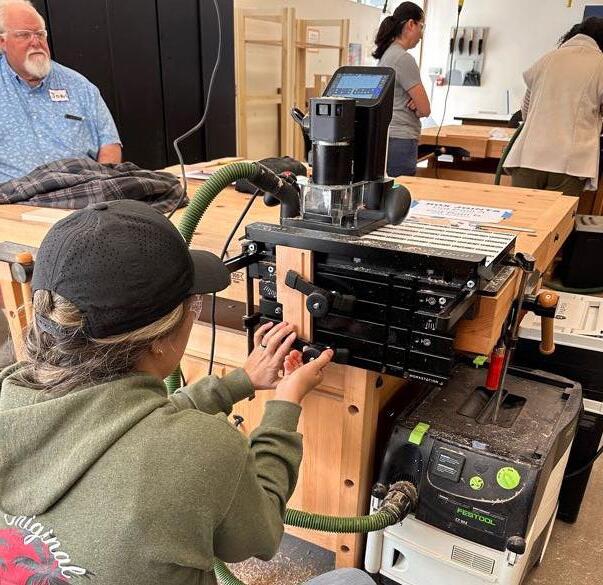

Southern California community college with a powerhouse wood manufacturing program. Their facilities are exceptional, and their staff deeply committed to student success, making it the perfect location for this kind of event. For months, the staff at Cerritos College and Shaper Tools worked with me on planning this event to the finest detail.
What blew me away was the enthusiasm from everyone planning and participating. Although the event was free, we had 100 percent attendance! Every single person who signed up showed up — some driving more than 180 miles to be there. We had 45 attendees: college students, high schoolers, a middle school student, CTE teachers, guidance counselors, and districtlevel coordinators. It was an amazing mix of people who all care deeply about education and the skilled trades.
At the heart of the workshop was a project: a custom cherry hardwood box with wood dowel hinges, box joints, custom engraving, and edge profiling. The box became our vehicle for teaching both technical and design skills. It was small enough to make in a day, a standard in classrooms, but featuring new techniques for traditional woodworking.


Royal Plywood donated all of the cherry used, an incredibly generous contribution. Shaper Tools provided handheld CNC machines, along with their expert staff who walked everyone through setup, toolpaths, and operation. We also had machines on loan from AWI and Mark Keppel High School in the Alhambra Unified School District, which helped ensure that every group had access to equipment.
Cerritos faculty and staff were also key to the day’s success, offering one-on-one guidance to both new and experienced users. It was especially rewarding to see some educators and students who had never touched a handheld CNC router before walk away with the confidence to bring that technology into their schools.
One of the biggest goals for the day was to show how CAD and CNC can be integrated into woodworking education, and how these skills cross over into subjects like engineering, computer science, and art/design. Many don’t see the possibilities of bringing woodworking into other classes and after this event I could see the wheels turning for those not in a woodworking classroom.
In addition to the hands-on project, we hosted an industry exhibitor section so that attendees could meet professionals, ask questions, and learn about modern tools, materials, and career paths. This was much more than a workshop, it was an opportunity to build lasting relationships.





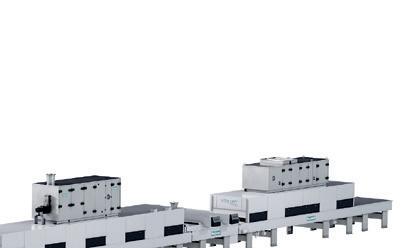





the woodworking and manufacturing community cares about education.
We were honored to have support and presence from these outstanding brands and organizations:
• Royal Plywood
• SurfPrep Sanding
• Carbide 3D
• E.B. Bradley
• Colonial Saw
• Architectural Woodwork Institute (AWI)
• SoCal CITEA
• Vital Link
Each of these exhibitors brought something special— whether it was sanding equipment, hardware samples, materials, or educational support. More importantly, they brought themselves. They were present, they engaged with students and teachers, and they helped us make this event something truly valuable.
Students got to see what real careers in wood manufacturing look like. Educators got contacts for future partnerships and donations. And industry professionals got to connect with their future workforce. That kind of networking is powerful, and local events like this are the only way to make it happen.
This day wouldn’t have been possible without deep collaboration. Shaper Tools, Cerritos College, and our AWFS team put in months of planning and coordination to make sure everything ran smoothly. The loaned machines, donated materials, and on-site help from exhibitors were what made this experience rich and memorable.
I’m especially grateful to our industry sponsors. Their material and financial support helped us keep this event free for participants, and their presence underscored just how much
And to all the teachers who came — some on their day off, some with long drives, all with open minds — thank you. You are the foundation of this movement. Your willingness to learn new technologies, connect with industry, and build better programs for your students is what will keep this field thriving.
This event reminded me why I love this work. It’s not just about tools or techniques, it’s about people. When we invest in real, hands-on education, we invest in the future of our workforce. We help students discover careers they never knew existed. We support teachers who are trying to do more with limited resources. We give industry a chance to connect with and shape the next generation.
Workshops like this don’t just teach skills, they build community. Moving forward, I hope to organize more events like this around the country. There is so much potential in these local, highimpact gatherings. They create real momentum for students and educators and build stronger connections between classrooms and careers.
If you’re interested in bringing a similar event to your region, I’d love to talk. Let’s keep building — together. S P
Tovi Spero came from an education background before coming to the Association of Woodworking & Furnishings Suppliers (AWFS). With more than 12 years of experience teaching physics, engineering, robotics, and in makerspaces he brings a modern take on wood industry education. His goal as Education Director of AWFS is to expose students and teachers to modern wood manufacturing and connect education and industry to better support the next generation of wood industry professionals. tovi@awfs.org or 323-215-0311.


Why do we go to trade shows? Is it for the buying? Selling? Networking and dealing? Yes, absolutely!
But so often overlooked is the knowledge benefit of going to a show. What do the experts say about making big machinery purchases? How do both craftsmen and mass production manufacturers price their products? How do you take advantage of the latest software and AI to make your business more efficient and profitable?
These are some of the questions we hope to answer at the education conference side of the AWFS Fair. With more than 90 speakers and 60 sessions, the College of Woodworking Knowledge is the education hub for the wood manufacturing industry in 2025. Maybe you’re coming to the Fair for new equipment. Maybe you’re coming to cut a deal with a client. Maybe you just love Las Vegas in the summer! But don’t forget that knowledge is power and experts from the industry are waiting for you this July at the AWFS Fair.
CWWK is the AWFS Fair’s signature education conference. Organized into six tracks, education sessions are tailored to the needs of the industry both as a product manufacturer and a supplier. Sessions include seminar talks, panel discussions, hands-on workshops, and roundtable discussions. Tracks include:
• Business
• Technology
• Production
• Educator
• Workforce
• Field Trips
Visit www.awfsfair.org/education for more information on all sessions. And visit www.compusystems.com to register for any or all sessions, which can be done with general registration.
New to the 2025 education lineup are the Field Trips. These are guided tours of the show floor by experts in different parts of the industry. Curated exhibitors have been selected based on the
themes of tours so that attendees get the most relevant information and connections to expand their business. Field Trip themes include:
• Closets
• Kitchens
• Furniture
• Educator/Student
• Getting Started in the Industry
These guided tours are more than quick walks – the group has time to really stop and talk with key exhibitors and walk away at the end of the tour with project plans and merchandise galore.
Just looking for a quick look at some new products and services? The Rapid Fire Presentations are 15-minute spotlights by exhibitors on their latest offerings. No registrations necessary, just come up to the AWFS Fair Live stage on the show floor and check out what’s new in three categories:
1. Software
2. Machinery
3. Hardware & Materials
Visit www.awfsfair.org/awfs-fair-live-2 for more information.
What’s an education program without a keynote? How about three?! Each day at the AWFS Fair Live stage features an expert in the industry talking about the big challenges and advances in the wood industry. There is no registration required — just head to the Live Stage for:
• Cloud-Powered Millwork: Bridging Craftsmanship and Innovation. Brian Hamilton. Tuesday, July 22nd.
• Understanding the Custom Woodworking Business, from a Contractor’s Perspective. Geoffrey Finkel. Wednesday, July 23rd.
• How Can We Get Younger Generations in the Woodworking Industry? Matthew Buell. Thursday, July 24th.

American Laminates offers premium-only quality with 50+ colors in stock. Available as panels, edge-banded shelving, line bored or grooved. Servicing the West Coast, USA. Visit our website and see our color selection and cross reference guide.
www.americanlaminates.com
AWFS Booth #2837

Blum’s MERIVOBOX is a new metal drawer system with clean lines and versatile functionality. Its aesthetic complements modern cabinetry while offering multiple design options from a single platform. Engineered for strength, MERIVOBOX supports heavy loads and still opens with ease. Ideal for kitchens, baths and beyond it’s a drawer system that meets the demands of both high design and daily use.
www.blum.com
AWFS Booth #3901
Many companies use the biennial Vegas show to share new products with the industry. S&P has a special preview here of those products and where to find them.*
*Booth numbers provided at publication — subject to change
Introducing ROBUSeco, the automatic spray coating system tailored for small to medium-sized businesses. Whether as a stand-alone unit or integrated into existing production lines, ROBUSeco boosts efficiency with minimal labor while delivering consistent, high-quality finishes. Visit us at AWFS and discover how ROBUSeco reduces downtime, increases output, and optimizes your coating process.

www.burkle.tech/us-en
AWFS Booth #1663



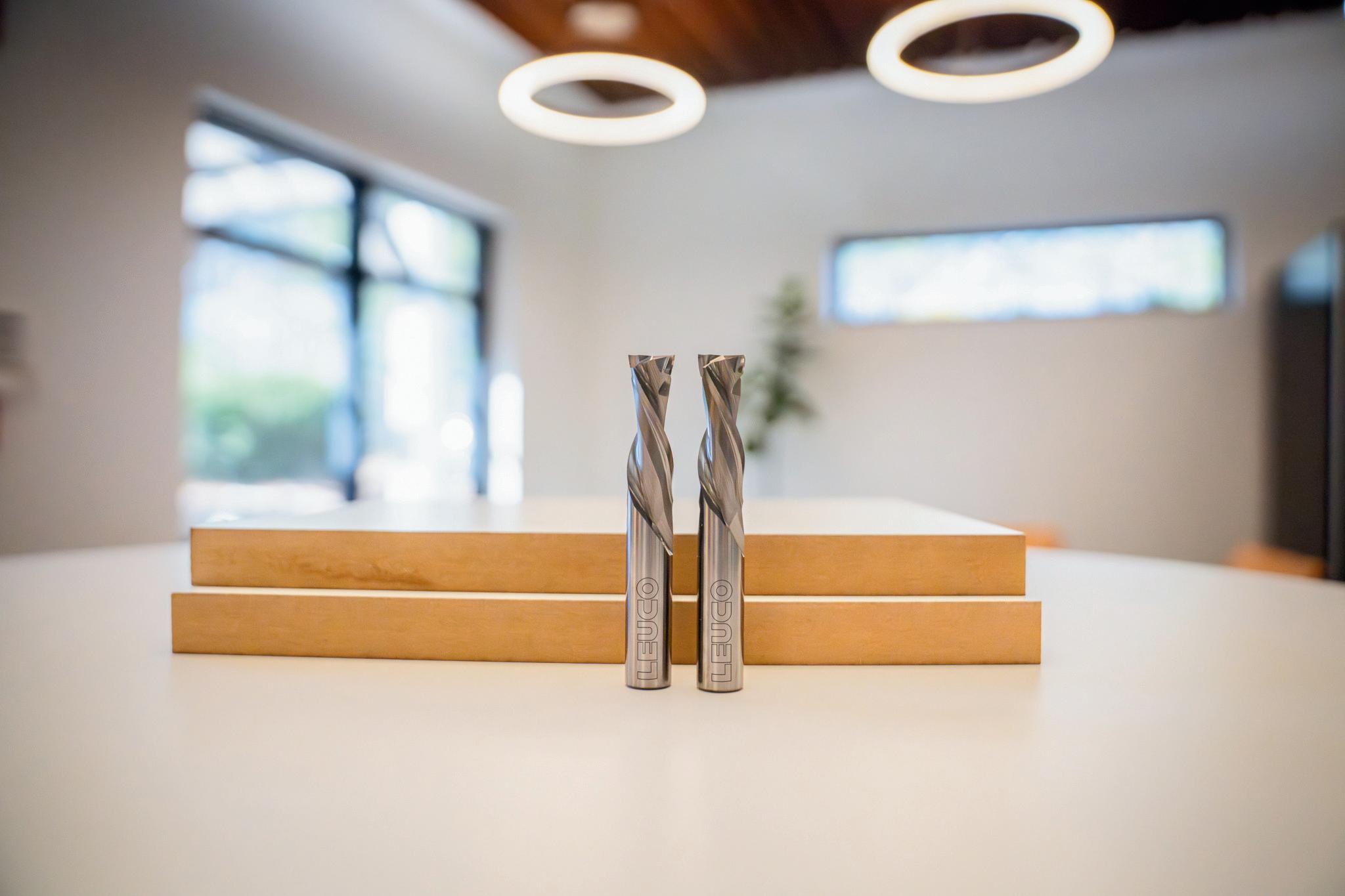








The Python XPR CNC machine center boasts technologies, affordability and features including robotic loading and unloading, automatic material alignment, on-board label printing, spoil board cleaning, maximizing efficiency and minimizing human intervention. The Python XPR also incorporates the new 6th generation CNC technology with integrated AI, requiring minimal training for operation.
www.cncfactory.com
AWFS Booth #1413
Featuring the newest addition to Dackor's 3D laminate collection, UltraMatte Black Lotus, this deep and elegant hue brings sophistication and bold contrast to any design. UltraMatte Black Lotus is known for exceptional scratch resistance and anti-fingerprint technology while being smooth and soft to the touch.
Introducing Daubond 22204 one-component polyurethane dispersion, the adhesive that combines perfect spray ability and heat resistance which will change the game for single part 3D laminating applications. Our 30-year history of manufacturing 3DL adhesives and hands-on process knowledge assure success.
www.daubertchemical.com/adhesives
AWFS Booth #2873




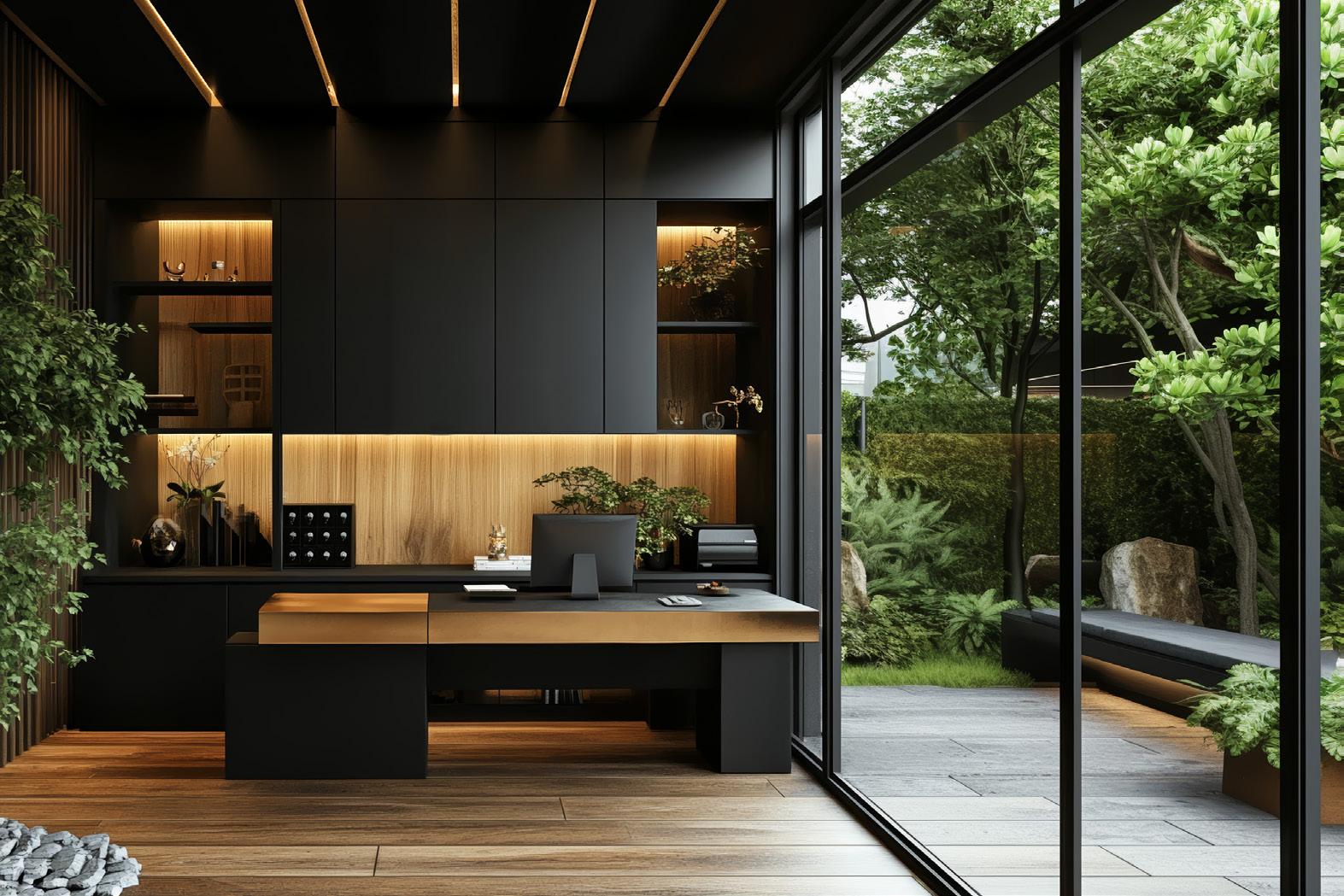









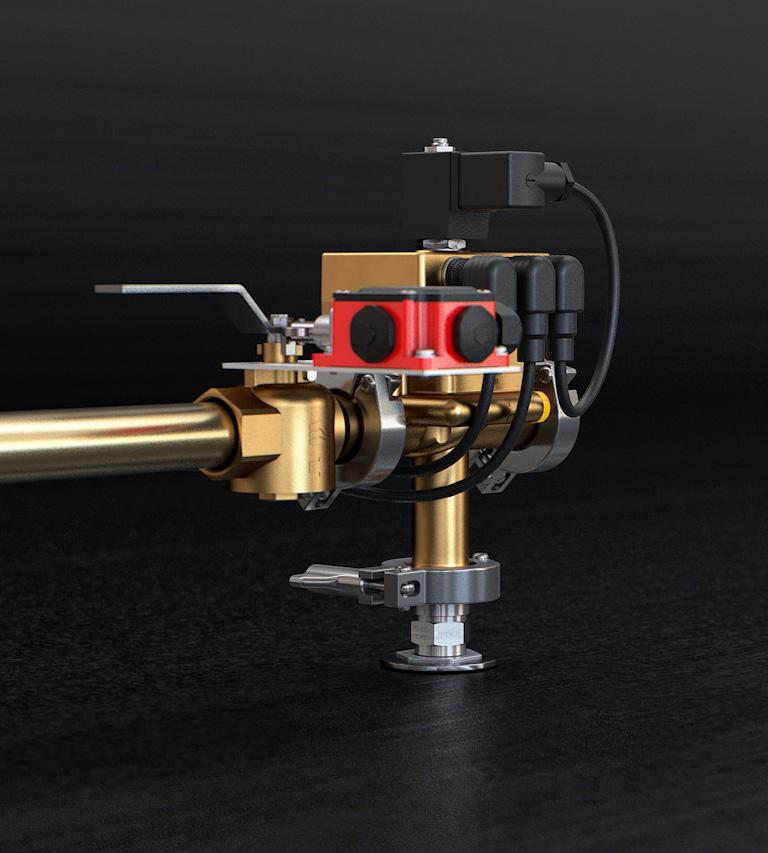
GreCon Spark Detection & Extinguishing Systems provide preventive protection; they do not wait for a fire or dust explosion to erupt. IR detectors monitor the conveying paths and activate water extinguishing within milliseconds.
The GreCon Intelligent Extinguishing Module (IEM) has sensors integrated into the extinguishing module to detect the wear of your nozzles and the pressure flow to the nozzles. www.fagus-grecon.com/en
AWFS Booth #3769
The Dualtech 500 reciprocating sprayer is used to spray stain, primer, and topcoat on any smooth or shaped surface. It is supplied with a synthetic belt and the classic and user-friendly Giardina Group product recovery and belt cleaning system. This all comes in a compact and functional layout, which makes it a reliable and versatile option. www.giardinausa.com
AWFS Booth# B7973
HUBTEX North America is proud to showcase our MaxX and FluX series—robust, multidirectional sideloaders and forklifts built for the timber and wood industry. Ideal for lumberyards, sawmills, and wood processors, these trucks excel indoors and out. With ergonomic design, exceptional maneuverability, and the ability to handle long, heavy loads, they’re engineered to boost productivity and performance.
www.hubtex.com/en-us
AWFS Booth #5443



Depth of customization meets lean manufacturing for the ultimate in powerful custom design to manufacturing software. KCD Software CNC Commander excels with a user-friendly design interface and robust manufacturing engine.
Get your CNC machine up and running quickly with KCD Software’s free one-on-one Technical Support included. Join us today to see the KCD Software difference in the cabinet and closet industry. www.kcdsoftware.com
AWFS Booth #3237
Kronospan’s design journey is a thrilling adventure that never ceases to evolve. Created to inspire designers, architects and craftsmen, our new Kronodesign Trend Collection offers a strong commercial edge. It is conceived to answer market demands and predict upcoming trends that reflect both the spirit of today and the promise of tomorrow.
www.kronospan.com
AWFS Booth #3369








The Laguna SmartEdge Compact edge bander is part of a new range of automatic edge banders designed for small to medium-sized shops. Built for exceptional performance, it features a solid, heavy-duty structure to ensure consistent results and repeatability. The SmartEdge Compact is an affordable solution engineered to deliver a perfect edge, elevate your production, and improve your company's bottom line. www.lagunatools.com
AWFS Booth #2500

Blending timeless reeded elegance with modern craftsmanship with the Verona Tambour Range Hood. Available in four widths and multiple wood species, each hood includes a Broan-compatible liner and is easily installed with a French cleat. A bold, customizable focal point for kitchens that value classic detail and contemporary design.
www.omeganationalproducts.com
AWFS Booth #3501
Supersand is the industry’s leading sanding solution and only solution to handle elaborate profiles effectively and lower your cost per sanded linear foot.
• Easy to use
• Comes in standard heads that work with a variety of different machines or create a customized solution to accommodate your specification
• Made in the USA to the highest quality standards and available with quick lead-times
www.peaktoolworks.com
AWFS Booth #2822
The 448KBCC Craftsman Collection Knife Block
Base Cabinet Pullout, from Rev-A-Shelf, where timeless design meets practical function. Crafted from solid maple with curved black wire accents, it features knife block inserts, a removable utensil bin, and an antimicrobial cutting board. Ideal for 9" and 12" cabinets, it offers smooth, soft-close operation and easy installation
www.rev-a-shelf.com
AWFS Booth #3501
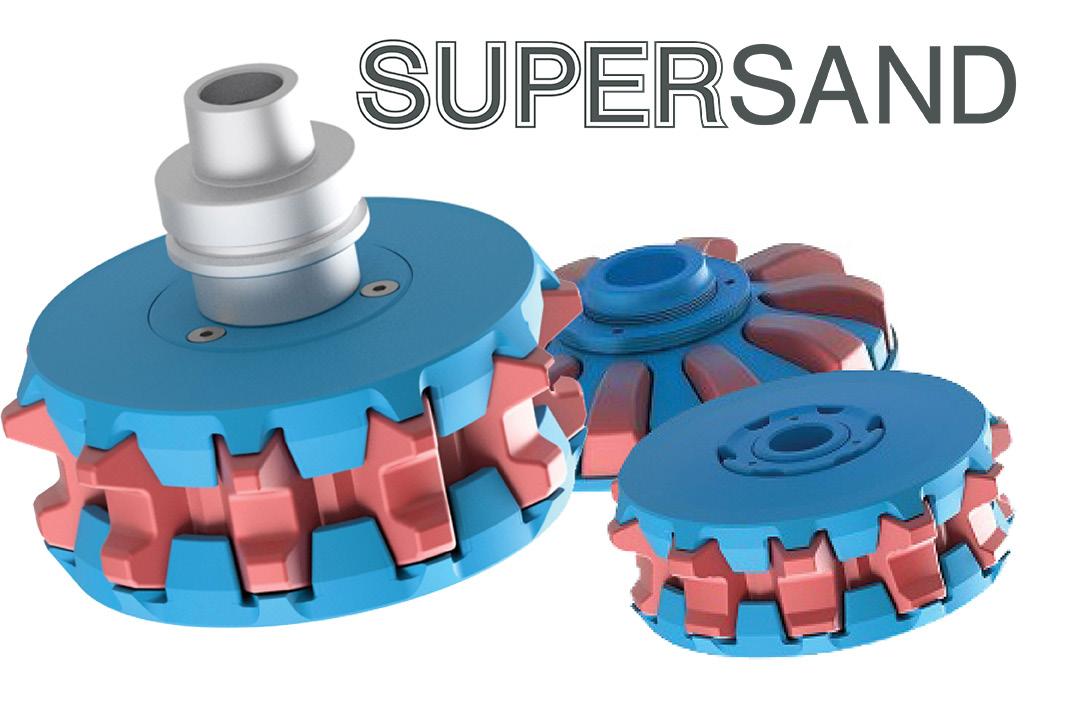






The new Finsa Duo panels use antibacterial thermal-fused laminate featuring a woven textile-like textured front and standard melamine back — such a lovely touch for bathroom spaces.
The Textile finish naturally merges design and technology with its fabric-like texture. Finsa products are offered as part of a complete program of edgebanding, panels, laminates, cabinet doors, and custom-made cabinets.
www.richelieu.com
AWFS Booth #3009

Folder is a system developed to allow complete access to the internal space of both conventional and corner cabinets and, at the same time, to minimise the space taken up by the cabinet doors when they are fully open.
When opened, the two doors fold and overlap each other until they automatically reach the point of maximum opening. This frees the cabinet interior from any obstruction and allows the unencumbered opening of full-width internal drawers without the use of spacers. The closing action is extremely smooth and controlled with a gently decelerated movement.
Folder can be used in a host of applications wherever you want to take advantage of the 100 percent access conferred by a 180° opening hinge.
www.salice.com
AWFS Booth #3911

SFI’s flagship line, TigerPLY, includes Industrial, Structural, and Decorative Hardwood panels known for their strength and versatility. Trusted by craftsmen worldwide, TigerPLY is ideal for cabinetry, furniture, flooring underlayment, RVs, and marine use — engineered from some of the planet’s most sustainable resources.
www.tigerply.com
AWFS Booth #3209















No CNC Experience Needed
Fully AI-driven operation
Design ANY Cabinet- no template or library limits
Automatic Nesting, labeling and assembly guidance
It’s That Easy!
-Tim Richardson, General Manager
1. Choose Your Project: Select from a wide variety of cabinet, furniture, and woodworking options.

2. Enter Your Specs: Input your dimensions and preferences quickly.
3. Press Start: The AI automatically handles cutting, labeling, nesting, and more.
4. Start Building: Get precision-cut parts with no coding or delays.





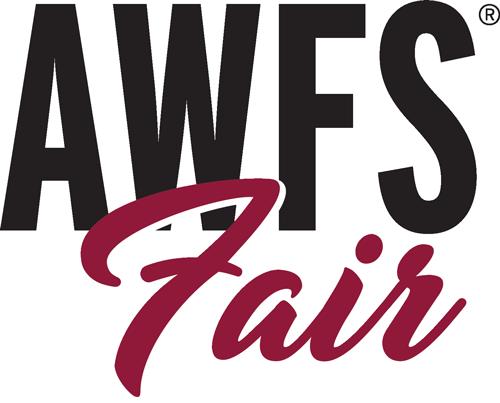

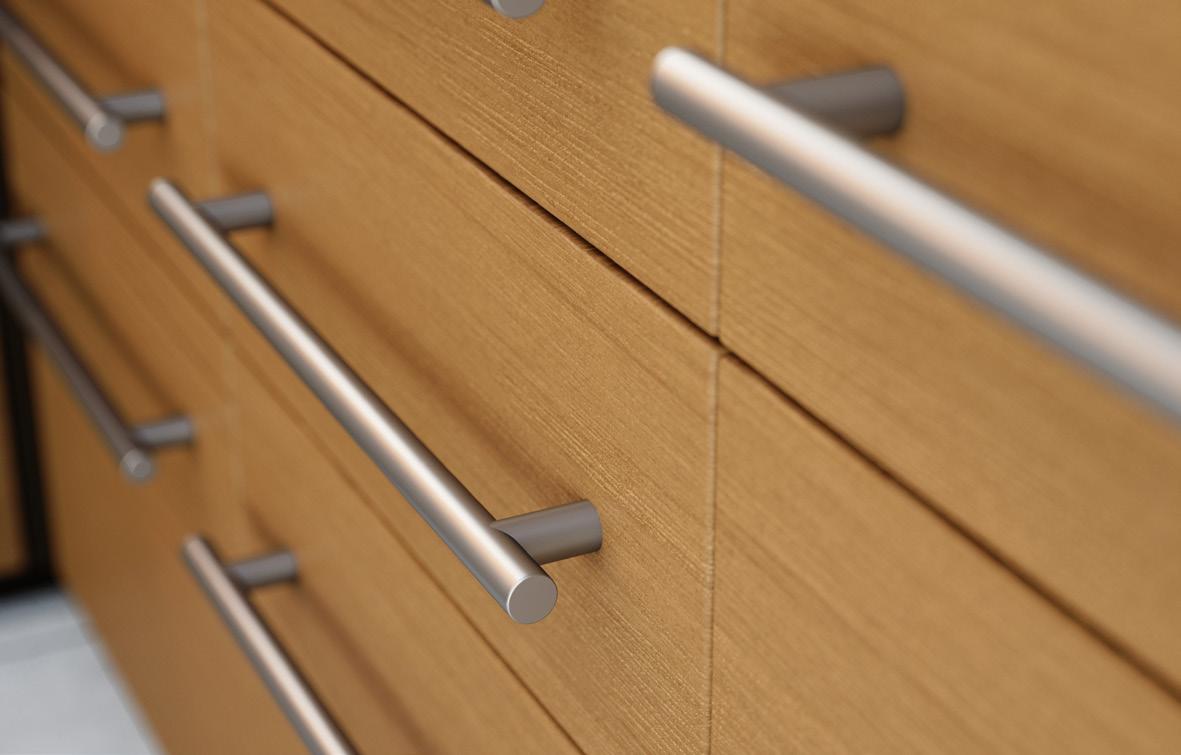
Visit Thermwood at AWFS to see the AI-powered Cut Ready Cut Center in action. No programming or CNC experience needed — just walk up, adjust a design, and run it yourself. Create fully custom cabinets with ease. Smarter, faster, and more profitable cabinetmaking starts here. Experience it hands-on and see the difference AI makes.
www.thermwood.com
AWFS Booth #2523
Simona America is proud to feature Tunkhannock Teak as a standout color option in our Polygrain HDPE lineup. With its rich, warm tones that authentically capture the look of treated teak wood, it’s a natural fit for outdoor furniture, cabinetry, and a wide range of marine applications.
Key Features:
• UV-resistant for long-lasting vibrancy
• Low maintenance, no need for staining or sealing
• Superior weather resistance www.simonapolygrain.com
AWFS Booth #4211


Tresco Lighting unveils the OptiPockit SL — featuring selectable wattage and CCT, dual voltage compatibility, and interchangeable trims. With intuitive design, energy efficiency, and biodegradable packaging, it's the smart choice for any lighting project. Available in 3000K, 3500K, and 5000K, and backed by a five-year warranty for long-lasting performance.
www.trescolighting.com
AWFS Booth #3501
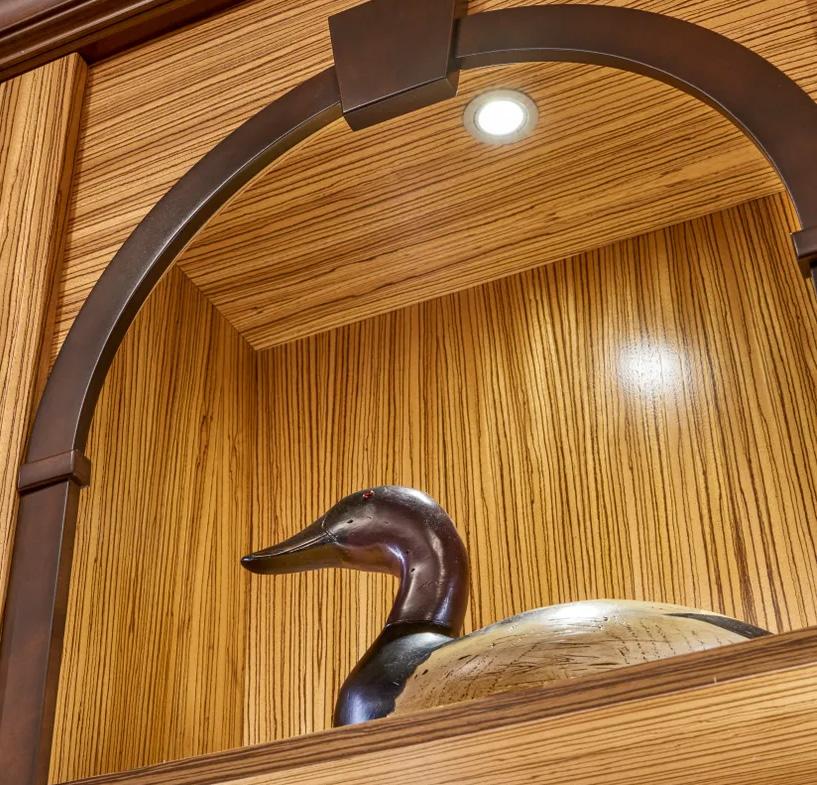






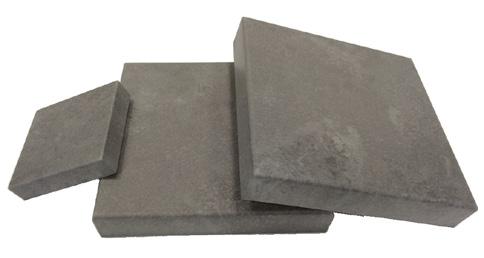

Despite a smaller turnout than usual, the High Point Spring Market 2025 proved to be a vibrant celebration of the industry, with dazzling showroom offerings, memorable educational events and dynamic speakers.
The world-renown home furnishings trade show, organized and sponsored by the High Point Market Authority (HPMA), spread out over 180 buildings in High Point, North Carolina, and featured showroom exhibitions, educational programming and social events.
Keynote Series speakers shared keen insights into their professional framework, outlining unique strategies and stories that have helped their businesses succeed. Full videos from the Spring Market Keynote Series can be found on the website.

April 26-28, 2025
High Point, North Carolina www.highpointmarket.org
Next Show: Fall Market, October 25-29, 2025
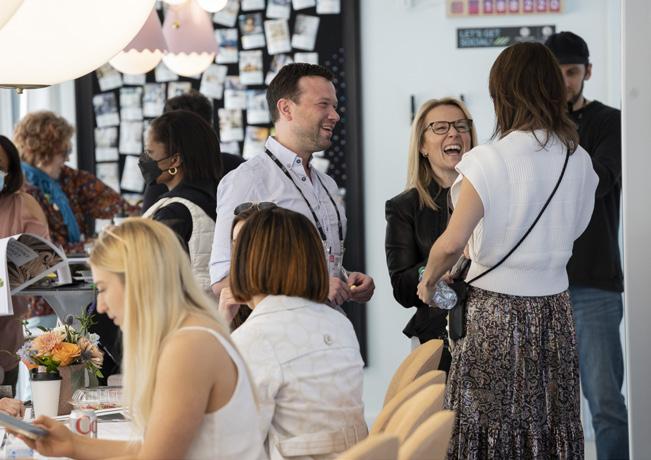

Also online, check out the Style Spotters pick from the Spring Market, along with other trends and happenings at the show.
A High Point Market Authority spokesperson said the international attendance for the Spring show was off this year by about 14 percent, citing economic and trade uncertainties. Tammy Covington, President and CEO of HPMA, had said prior to the show that the drop was expected with tariffs causing hesitation in the industry.
The Spring show’s overall registrations were only 1.3 percent off last year’s Fall show, said officials, but several categories — including retailers and those who stock product — were strong and show signs of optimism in the market.
Organizers look now to their Fall Market, scheduled for October 25-29, 2025. S P
HPMA recently announced a strategic alliance with the National Kitchen & Bath Association (NKBA), the world’s leading trade association for the kitchen and bath industry and owner of the Kitchen and Bath Industry Show (KBIS), marking a convergence of the kitchen and bath sector with the furnishings industry, expanding both organizations’ influence among the design community and growing focus on the whole home.
“High Point Market is the platform by which the future of our industry is tested, tried, and solidified. It’s where the principals connect and the changemakers push. It is a biannual convergence of the best and brightest in our industry,” said Tammy Covington, President and CEO of High Point Market Authority. “The conversations that happen here lay the groundwork for the years ahead. There have always been elements of kitchen and bath here in High Point, but this alliance with NKBA will allow us to bring it forward, to highlight it, and to serve the industry in new and exciting ways.”
"Our partnership with High Point Market Authority represents a powerful alignment between two organizations committed to inspiring, empowering, and supporting the

Thanks to the affordability of ShopBot’s professional grade CNC machines, the technology of manufacturing cabinet boxes, doors, drawer fronts, shelves, and even countertops, is now well within the reach of smaller shops, not just large cabinet manufacturing facilities.
See our full line of CNCs at ShopBotTools.com Then give us a call at 888-680-4466
Let’s talk CNC that fits your workflow–and your budget.

interior design community," said Bill Darcy, Global President and CEO of NKBA | KBIS. "At NKBA, we've seen kitchen and bath design trends expand their influence across the entire home, driving new ideas and inspiration for the broader interiors industry. Through this alliance with High Point Market Authority, we’re excited to share NKBA’s unique brand experiences, educational resources, and foster business-driving connections that add value to the design community as a whole."

Ask about our show-season pricing – no trip to Vegas needed.



Returning to Cologne with renewed energy and an unmistakable sense of forward momentum, interzum 2025 once again solidified its standing as a world-leading trade fair for furniture production and interior design. Over the course of four days, the show attracted an estimated 60,000 trade visitors from 148 countries and hosted 1,616 exhibitors representing 57 nations, creating a truly global stage for collaboration, innovation, and future-focused solutions.
At the heart of the event was the guiding theme, Rethinking Resources: Circular and Bio-based Solutions, which resonated throughout the halls of Koelnmesse. This year’s interzum wasn’t just about new materials and hardware — it was about how the industry is reimagining its role in a changing world.
The international scale of interzum 2025 was evident from the moment doors opened. With 86 percent of exhibitors and nearly 77 percent of visitors coming from outside Germany, the event brought together key players from markets including Italy, China, Spain, Poland, and the Netherlands.
“interzum 2025 has once again provided compelling proof that

www. interzum.com

Next Show: May 11-14, 2027
it is the leading platform for the design of future living spaces,” said Oliver Frese, Chief Operating Officer of Koelnmesse. “The feedback from discussions with our exhibitors confirms that the quality of the visitor profile at the trade fair was consistently outstanding, with discussions between professionals taking place at the highest level.”
interzum served as a catalyst for knowledge exchange and strategic partnerships, as visitors explored cutting-edge developments, discussed regulatory shifts, and addressed the urgent challenges facing the design and manufacturing sectors.
The theme of circularity and sustainability was more than a slogan; it was woven into the very fabric of the trade fair. From recycled foams and recovered wood fibers to zinc recycling systems and biocircular materials, exhibitors presented real-world solutions for minimizing environmental impact and maximizing resource efficiency.
The show’s structure — divided into Function & Components, Materials & Nature, and Textile & Machinery — provided a comprehensive market overview and gave attendees the opportunity to connect innovation with application.
“interzum 2025 has demonstrated the strength of this industry’s will to innovate – and the strength of its desire for sustainable change,”


said Matthias Pollmann, Vice President of Koelnmesse’s Trade Fair Management, at the conclusion of the show. “We’re already looking ahead to the next event, when we intend to keep on supporting this process of transformation and stimulating new ideas. Our aim is to continue to offer the industry a platform where global trends are not only discussed, but actively shaped.”
In addition to product displays, interzum’s event programming served as a knowledge hub, with three Trend Forums and multiple live presentation stages offering deep dives into the key topics transforming the sector.
On the Trend Stage, renowned experts offered insights into emerging global design trends, shifting market dynamics, and evolving regulatory frameworks. The Product Stage featured direct-from-exhibitor product launches, practical demonstrations, and implementation strategies — providing attendees with tools they could immediately apply to their own work.
Special attention was given to the Digital Product Passport, which many see as essential to supporting a functioning circular economy. Topics such as material traceability, lifecycle assessments, and digital labeling were discussed extensively.
A highlight of the event, the interzum award recognized exceptional design, innovation, and sustainability in product development. This year introduced a new Rethinking Resources category, reinforcing the fair’s overarching focus.
Out of 146 submissions from 80 companies across 23 countries, 66 innovations were honored — 12 of them receiving the coveted “Best of the Best” designation.
Among the standout winners:
1. Salice’ s Exedra2 A motorized slide-in door system featuring a self-supporting design with no visible guide rails, ideal for seamless, modern interiors.
2. Häfele’s Dynamic Living Module A compact, modular residential system designed for urban living, incorporating movable walls, reversible construction, and CO₂-efficient lighting.
3. ALVIC’s Zenit 3.0 A UV-lacquered, super-matte decorative panel with anti-fingerprint properties and scratch-resistant, regenerable surfaces.
4. Blum’s PLICOBOX A folding, tool-free box system that marries functionality with efficient packaging and scalable design.




Award-winning products were displayed along Boulevard North, drawing a steady stream of attention and sparking deeper conversations around product design’s role in sustainable transformation.
A key part of interzum’s appeal lies in its ability to bring people together — not just for business, but for genuine industry camaraderie. The #ILoveMyinterzum zone offered a casual, interactive space where attendees could network, relax, and enjoy daily happy hours that helped forge new connections in a laid-back setting. This emphasis on community-building reflects a broader industry trend toward collaboration and open dialogue — essential ingredients for navigating complex challenges and fastmoving markets.
With 176,000 square meters of exhibition space, high-caliber programming, and a globally engaged audience, interzum 2025 made a powerful case for the industry’s readiness to lead in climate-conscious innovation, smart material development, and circular design thinking. The next edition of interzum will take place in Cologne, Germany, from May 11-14, 2027. S P



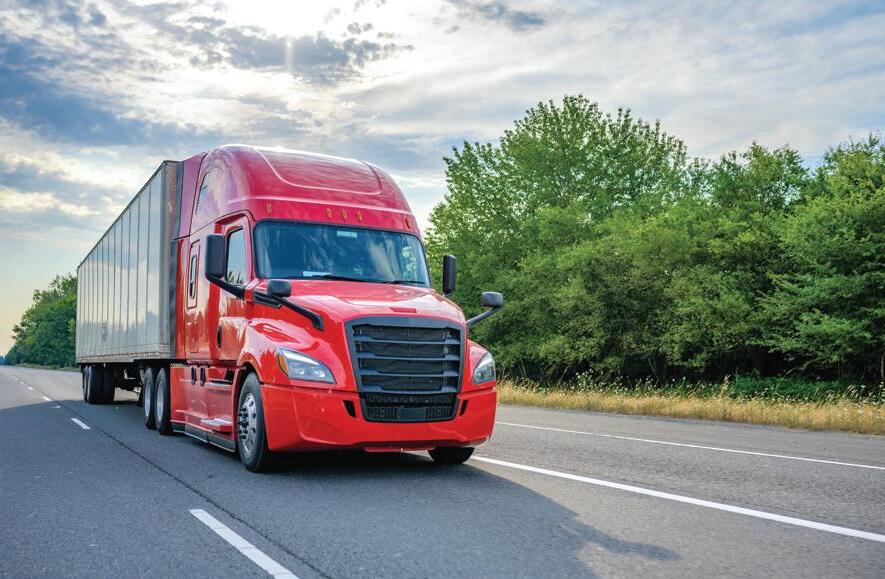






Celebrating its 50th anniversary, LIGNA 2025 once again cemented its reputation as the world’s premier trade fair for the woodworking and wood processing industry. Held from May 26–30 in Hanover, Germany, this year’s show brought together 1,433 exhibitors from 49 countries and welcomed approximately 78,000 visitors from 156 nations, echoing attendance numbers from 2023 and underscoring the enduring relevance of face-to-face trade events.
“Nothing can replace the experience of seeing machines in live operation,” said Dr. Jochen Köckler, CEO of Deutsche Messe AG. “LIGNA 2025 reaffirmed its position as a global marketplace, combining innovation, progress, and passion to fuel future investment.”
An impressive 93 percent of attendees were trade professionals, and 60 percent held management positions, including 44 percent in top-level roles. This high-level audience highlights LIGNA’s appeal not only as a platform for showcasing cutting-edge machinery and solutions but also for enabling serious business negotiations and long-term partnerships.
International turnout was strong, with 56 percent of attendees coming from outside Germany. The largest visitor delegations

Next Show: May 10-14, 2027


hailed from Poland, Italy, Austria, and the Benelux region, reinforcing LIGNA’s draw as a truly global meeting ground.
LIGNA’s three official focus topics — Connectivity, Sustainable Production, and Engineered Wood — resonated deeply across all sectors represented. From forestry to fine furniture, exhibitors demonstrated how technology and sustainability are shaping the future of wood processing.
Automation, artificial intelligence, and smart manufacturing featured prominently, as did systems and strategies aimed at climateconscious construction. The show highlighted how wood and woodbased materials can be responsibly used to create high-performance buildings and products in a resource-efficient way.
“We’re seeing strong industry momentum, even in an uncertain environment,” said Markus Hüllmann, Chairman of the VDMA Woodworking Machinery Association. “LIGNA gave many companies the motivation — and in some cases, new orders — needed to keep pushing forward.”
As always, product innovation took center stage, with over 900 new products and technologies debuting during the week. These launches
included next-generation machinery designed to optimize energy use, reduce waste, and streamline digital workflows.
A notable theme throughout the show was the evolving relationship between humans and machines. Rather than replacing people, AI-driven technologies are being used to amplify human creativity and free up time for design and craftsmanship. As Köckler noted, “Genuine emotionality and community cannot be replaced by AI — and LIGNA remains a vital space for those human connections.”
LIGNA 2025 also introduced two new initiatives that received high marks from attendees: LIGNA.Circular and LIGNA.TruckStop.
LIGNA.Circular, located in Hall 12, was a hub for conversations and exhibits focused on the circular economy — showcasing how the woodworking sector is actively embracing sustainable materials and regenerative design practices.
Meanwhile, LIGNA.TruckStop catered to craftsmen and tradespeople with a more hands-on approach. It featured power tool demonstrations, peer-to-peer knowledge sharing, and business tips tailored to workshop professionals.
The show’s unique blend of high-tech machinery, artisanal skill, and international commerce continues to set it apart from other industrial fairs.
Feedback from across the industry was overwhelmingly positive. Jan Kurth, CEO of the German Furniture Industry Associations, praised LIGNA’s focus on resource-efficient production: “This year’s event delivered valuable momentum for our sector, particularly in the areas of sustainability and circular economy.”
Exhibitors and attendees alike expressed optimism that the conversations, contacts, and contracts formed at LIGNA 2025 would translate into meaningful business in the months and years ahead.
In response to exhibitor feedback, LIGNA organizers announced a key scheduling change: beginning in 2027, the show will shift away from Ascension Day and run during a full five working days, from May 10–14.
As the woodworking industry continues to evolve, LIGNA remains a crucial venue for witnessing what’s next — from automation and AI to sustainable materials and global partnerships.
“LIGNA is more than a trade show,” said Köckler. “It’s a dynamic community. A place where innovation meets craftsmanship, and where the future of the wood industry is written in real time.” S P





AIA25, the American Institute of Architects’ (AIA) Conference on Architecture & Design, proved to be a premier event for architectural professionals. This year’s conference took place in Boston from June 4-7, offering a platform for industry professionals to network, expand their knowledge, and explore innovations in design.
The conference featured immersive learning sessions, inspiring keynotes, architect-led tours and dynamic networking opportunities. Attendees had access to the industry’s largest expo, showcasing thousands of products and materials from more than 600 brands.
AIA25 provided a launchpad for students and emerging professionals, offering resources, connections and inspiration


to launch their architecture careers. The conference also included exclusive product launches, open studios and alumni receptions.
With more than 13,000 architects and design professionals attending across four dynamic days, the event delivered inspiration, innovation, and collaboration on a grand scale.
Speakers included Dami Lee and Allie K. Miller, who set a tone of creativity and purposeful design and former U.S. Secretary of Transportation Pete Buttigieg, who joined AIA President Evelyn Lee in a forum on urbanism, infrastructure, and tech’s role in shaping cities.
Buttigieg called on architects to lead at a “delicate time” for America. “The simple fact that there is a phrase in American English, ‘wrong side of the tracks,’ tells you everything you need to know about the capacity for infrastructure, which is supposed to be about connecting, to also be something that can divide,” he said.
“Architects are the stewards of those overlapping circles of belonging,” continued Buttigieg. “You are, collectively, an incredibly important force at an incredibly delicate time for life in our country.… [Your] work can be conducive not just for better energy efficiency or housing affordability, but to better levels of social trust.”
AIA25 offered more than 450 CEU sessions (HSW, GBCI, RIBA, ADA, AIA credits) spanning technology, sustainability, materials, and practice management.
The expo featured 600+ brands across 127,000+ square feet, providing hands-on material demos, career coaching in the NextGen Lounge, and fun — including Puppy Park and Expo Bingo.
This year’s AIA Awards Gala brought together distinguished architects, industry professionals, and supporters to honor outstanding achievements in the 11 award categories announced during the gala. Visit www.aia.org/design-excellence/awards for more information on the 2025 AIA Awards and to view the winning projects.
AIA25 balanced technical enrichment, visionary discourse, and vibrant social engagement, empowering professionals to shape resilient, sustainable, and people-centered built environments. AIA25 proved to be a powerhouse of learning, community, and forwardthinking design; a resounding affirmation of architecture’s role in shaping a better world. S P




The 56th NeoCon once again asserted its position as North America’s premier trade fair for commercial interior design. With roughly 450 exhibitors across nearly a million square feet at THE MART in Chicago, the event drew close to 50,000 professionals from around the globe, spanning workplace, healthcare, hospitality, education, and retail sectors.
Centered around the theme “Design Ahead,” NeoCon spotlighted four transformative trends driving the industry forward:
• Sensory-Rich, Inclusive Design Neuro-aesthetics and biophilic principles were harnessed to create spaces that cater to diverse cognitive needs, promote wellbeing, reduce stress, and foster belonging
• Modular, Multi-Sector Adaptability
Configurable systems and flexible furnishings responded to evolving work-from-anywhere modes and hybrid environments
• Material Innovation & Tech-Enabled Design A strong push toward circularity, low-carbon and bio-based materials, metamaterials, and smart functionalities informed many launches
• Adaptive Resilience for Future Challenges Designs emphasizing sustainability, wellness, and readiness for climatic/health uncertainties
Dynamic speakers not only emphasized design as an agent of social change, but also underscored innovation through resilience and insight.
More than 60 CEU-accredited sessions, plus roundtables and workshops, centered on circularity, AI-driven materials, neurodiversity, wellness, and workplace strategies. Featured tours, including the Inside Design Tours and “Paved States gallery,” celebrated local architecture and material circularity.
The Best of NeoCon Awards showcased excellence in sustainability, technology, and business impact. And for the first

time, the community voted on People’s Choice Awards, highlighting standout innovations. The program’s top distinction, Best of Competition, was awarded to HALCON for its ASTORIA collection of conference and mobile communal tables. Winners also included Formica’s InDepth Surfacing, which took a Best of Competition award for Surfacing Materials & Finishes as well as an Innovation award and a People’s Choice award.
“The jurors were incredibly thoughtful and rigorous in their evaluations this year,” said Eileen McMorrow, Director of Best of NeoCon. “The winning products aren’t just keeping pace with industry trends — they’re actively driving critical design movements, from circularity and neuro-inclusive thinking to the integration of AI and advanced material innovation. We saw manufacturers embrace empathy, rethink flexibility, and experiment with form and function, addressing the evolving ways people live, work, heal, learn, and connect now.”
NeoCon 2025 delivered on its Design Ahead mission: blending bold creativity, inclusive experiences, material intelligence, and environmental responsibility. With eye-opening keynotes, a rich educational line-up, a flood of innovative products, and city-wide activations, the show demonstrated both the vibrancy and resilience of the commercial design community — setting a high bar for next year’s event. S P


The 20th anniversary of the Closets Conference & Expo featured not only educational sessions, keynotes and networking opportunities, but also the Top Shelf


June 11-13, 2025
Next Show: June 30-July 2, 2026, West Palm Beach, Florida
Design Awards, sponsored by Rev-A-Shelf. These awards recognized great design in closets, garages — even wine cellars! S P











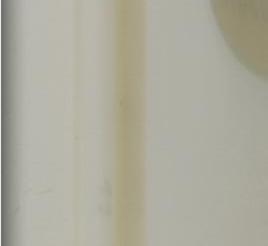
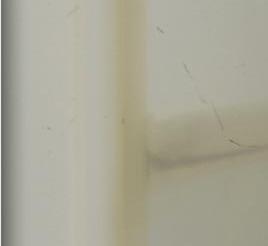




































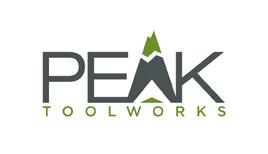











We at Surface & Panel are constantly amazed by the new products and their applications in our industry. S&P By Design is an opportunity to share some of those innovations used in real projects around the world.
“For this project, I sought materials that could truly elevate the sensory experience of the space, creating a more immersive and enriching environment,” said designer Valentina Bianco, who designed this space for Milan Design Week. “I specifically chose [the Organoid surfaces] to introduce a multisensory experience — engaging touch, sight, and smell — into the design. Nature, in its perfection, has already created everything we can imagine, and I wanted to honor that by bringing natural elements into the child’s environment.”
“Its sensory and natural component plays a fundamental role, inviting the child to touch and feel that this surface is unlike any other,” she continued. “When the flower changes, so does the tactile sensation, and with it, the scent evolves as well. Organoid is truly oneof-a-kind, offering a multisensory experience that is both subtle and profound.” S P
www.organoids.com www.valentinabianco.it



If you have an interesting and innovative project to consider for S&P By Design, please submit 1-3 images and a brief explanation of the project, including materials used, along with your company name and URL to jwilliams@526mediagroup.com. You will be contacted if your project is selected for publication in an upcoming issue.

All our shown and mentioned decors are reproductions.

Always inspiring. Always up to date. With our innovative rolling collection concept, the new EGGER Decorative Collection 24+ has more than 80 decor and texture combinations, all seamlessly linked by our array of digital services, putting all the latest trends and innovations at your fingertips to help inspire your next project.
Discover our new collection: to.egger.link/decorative-collection
